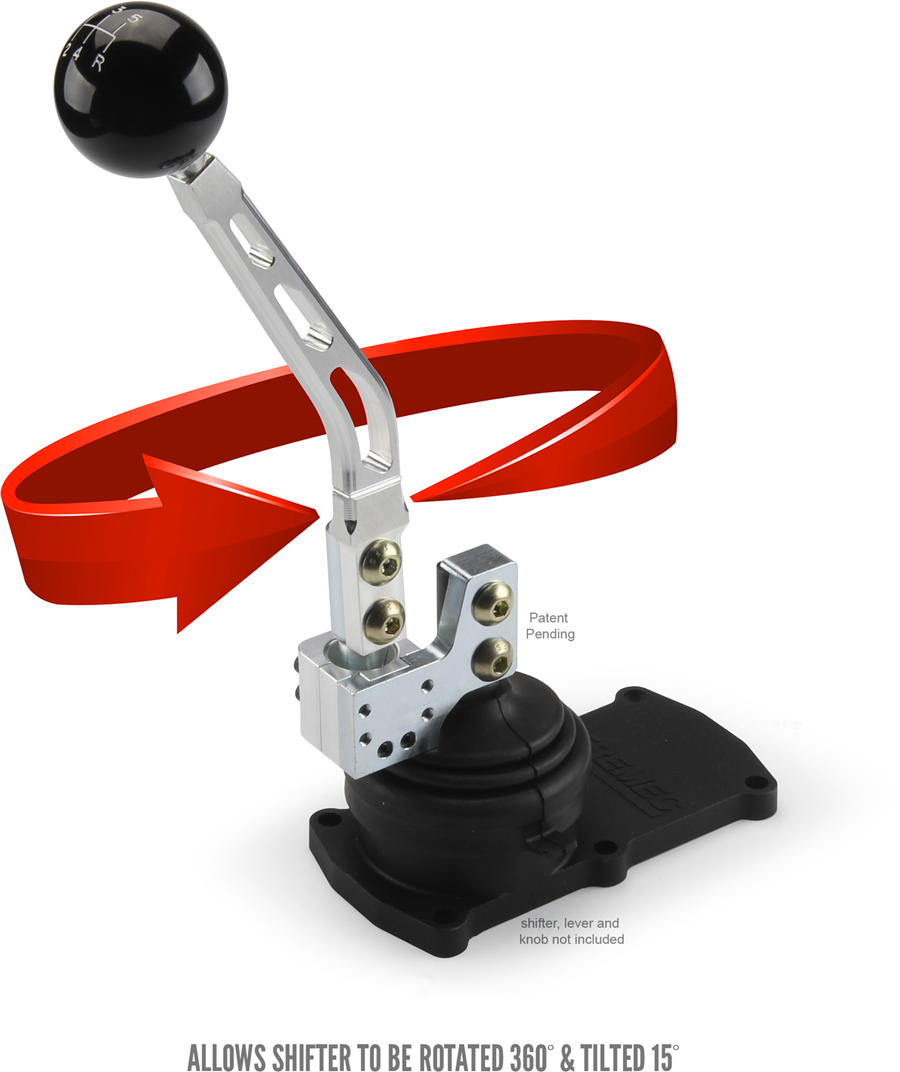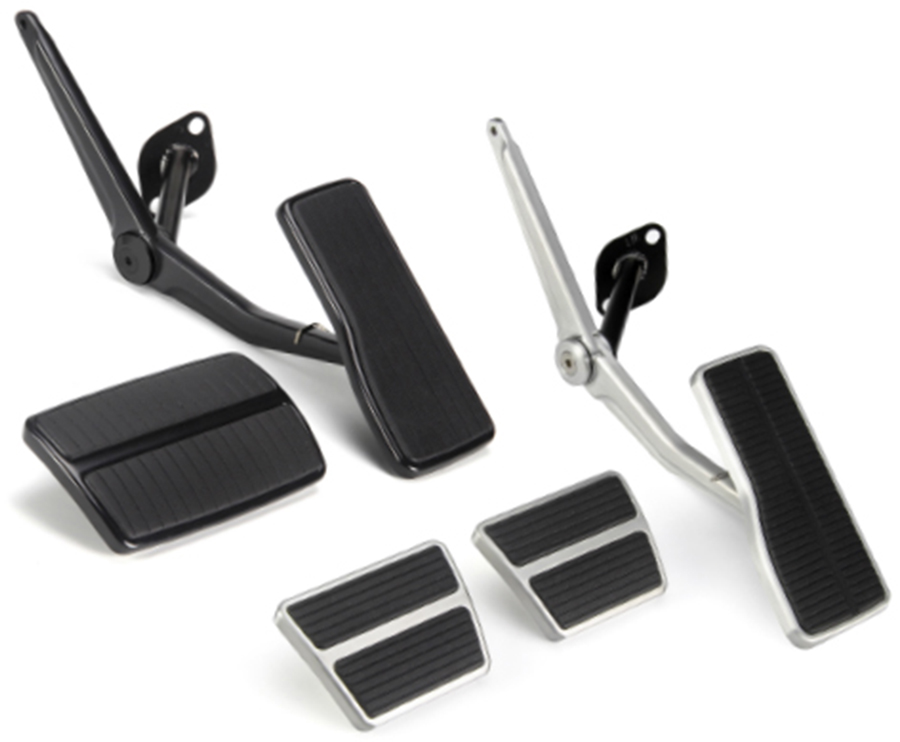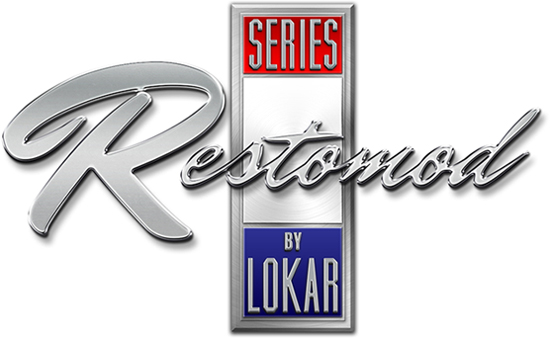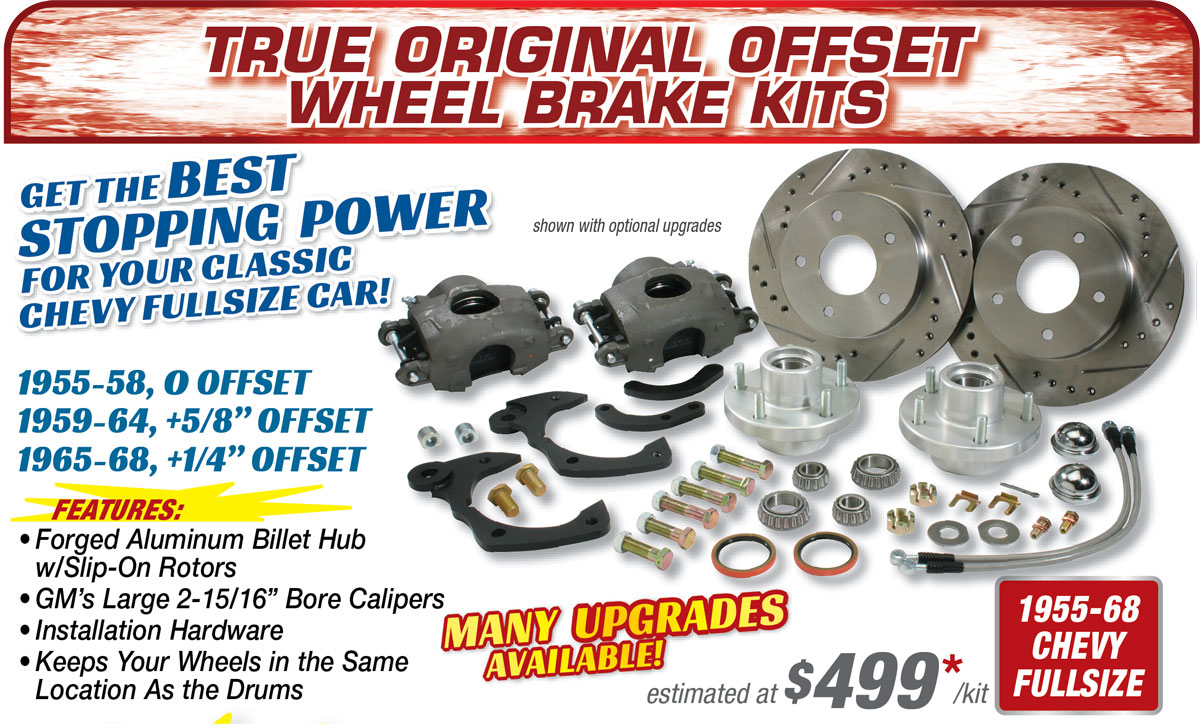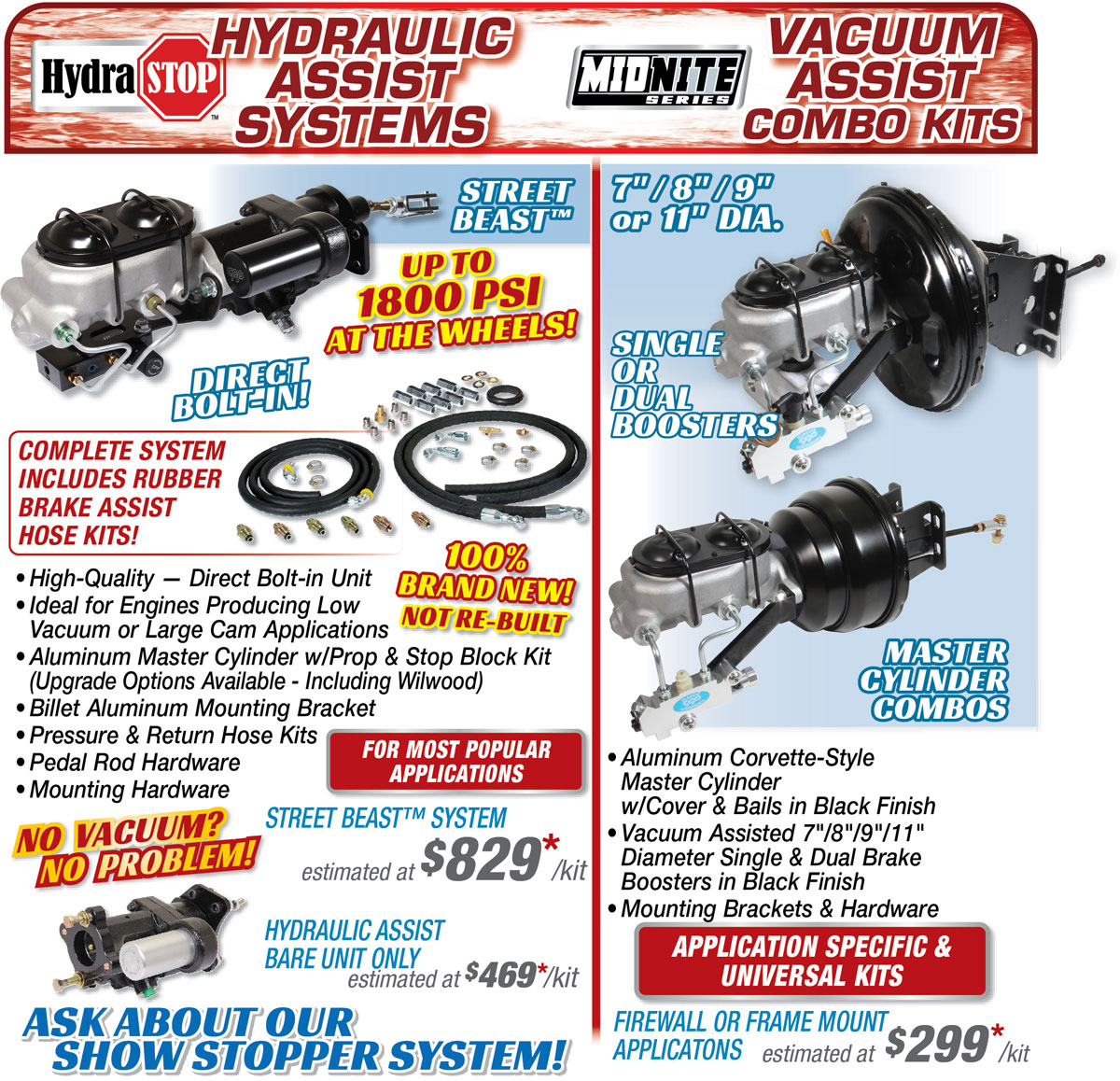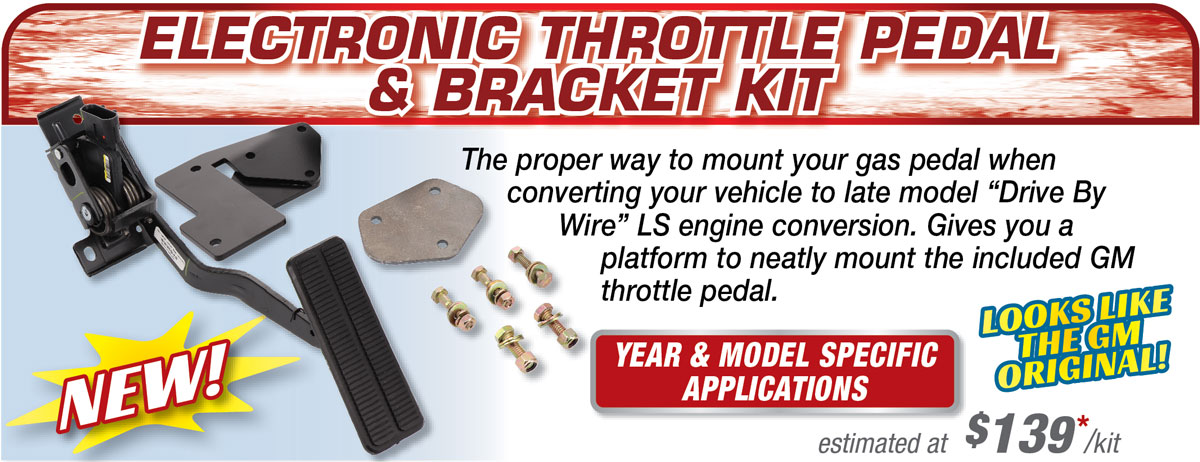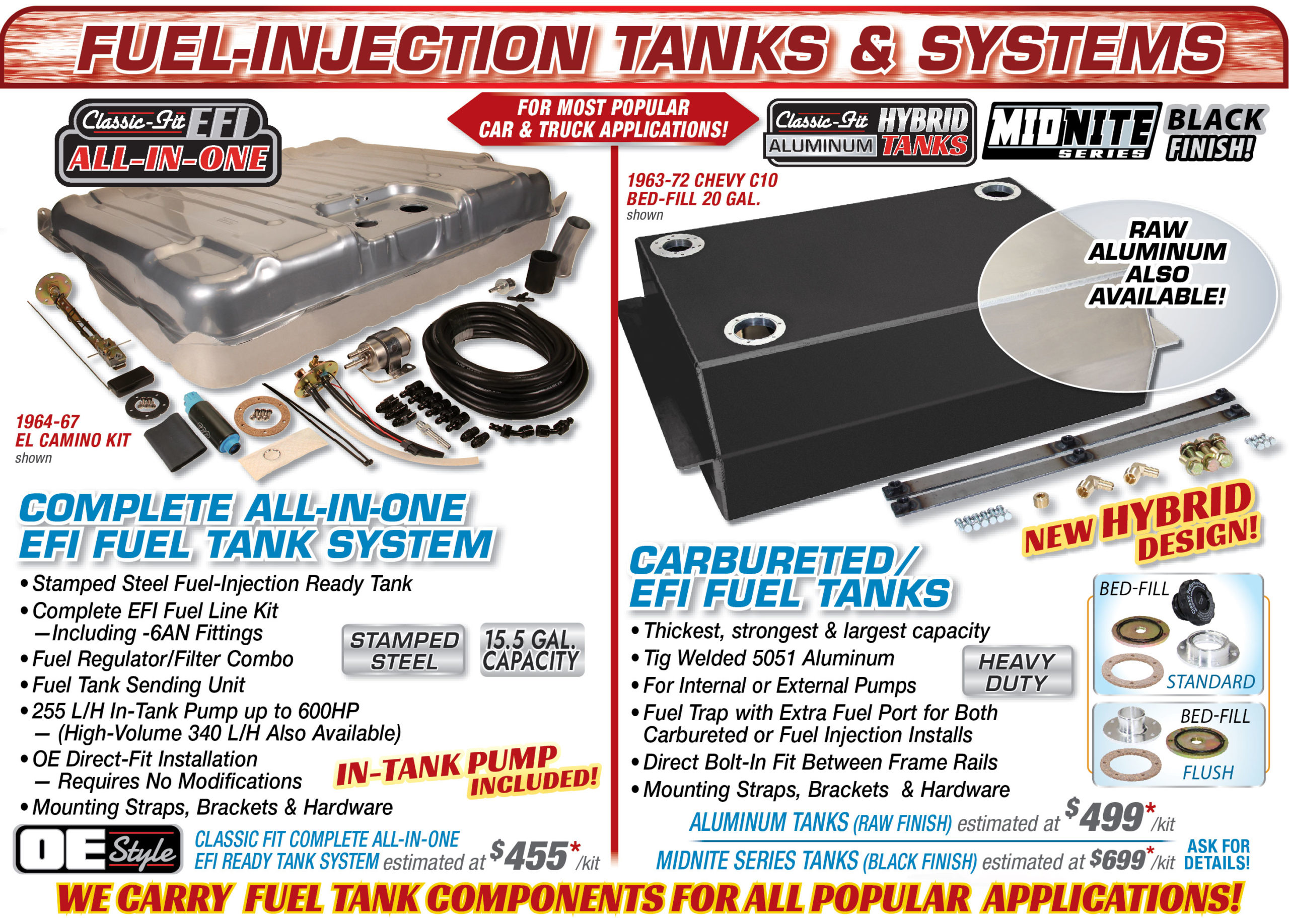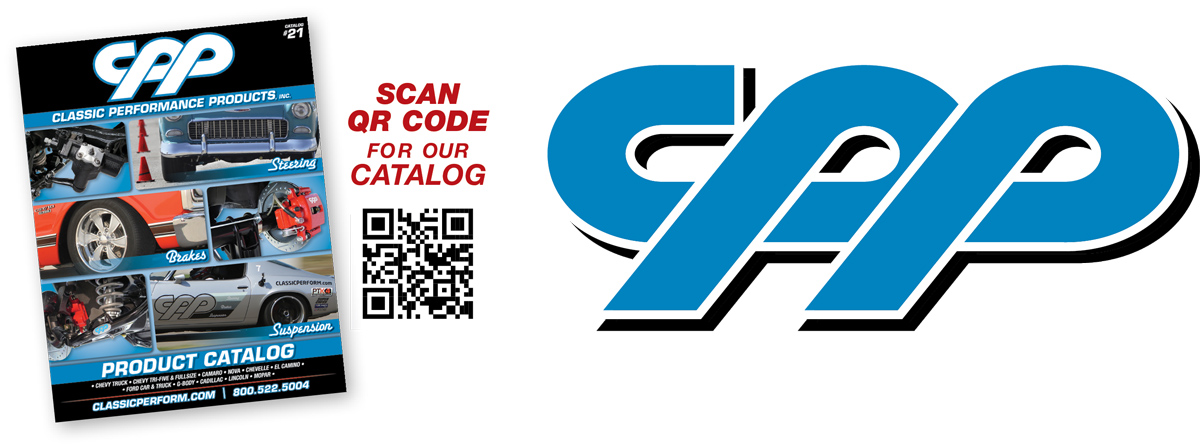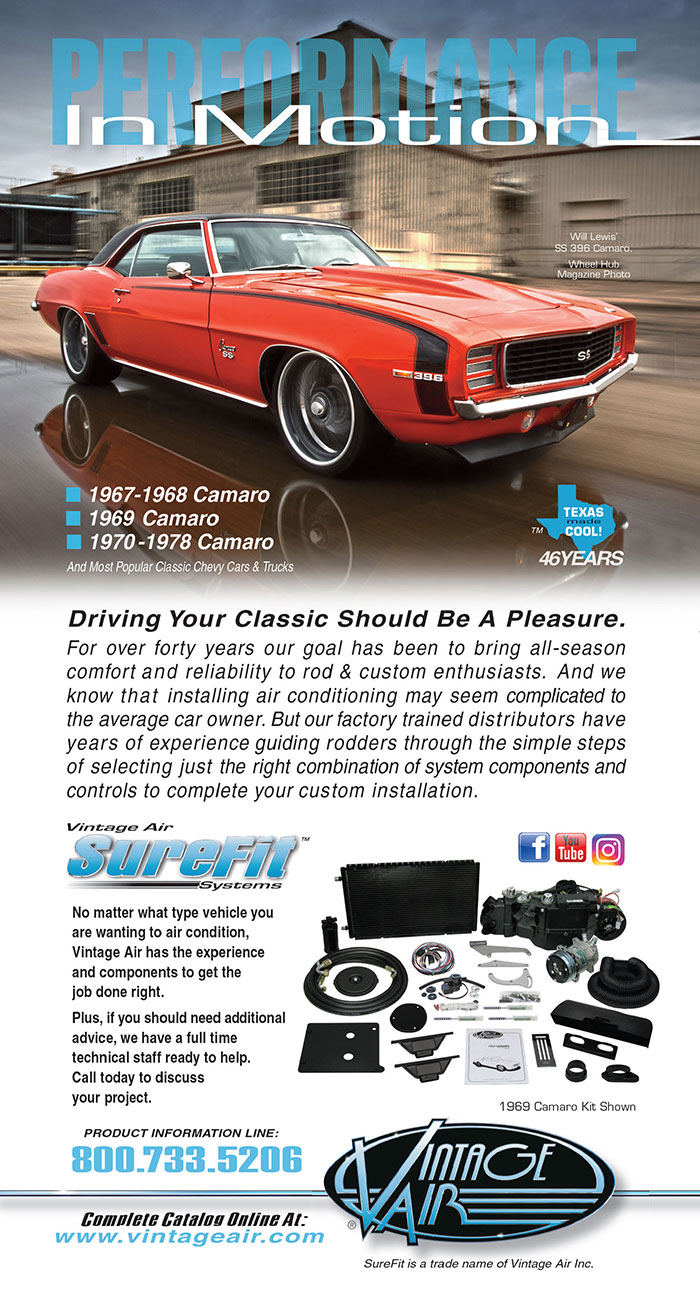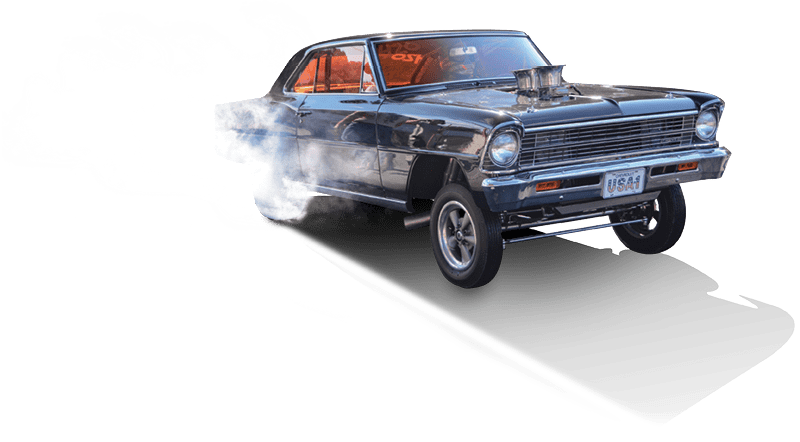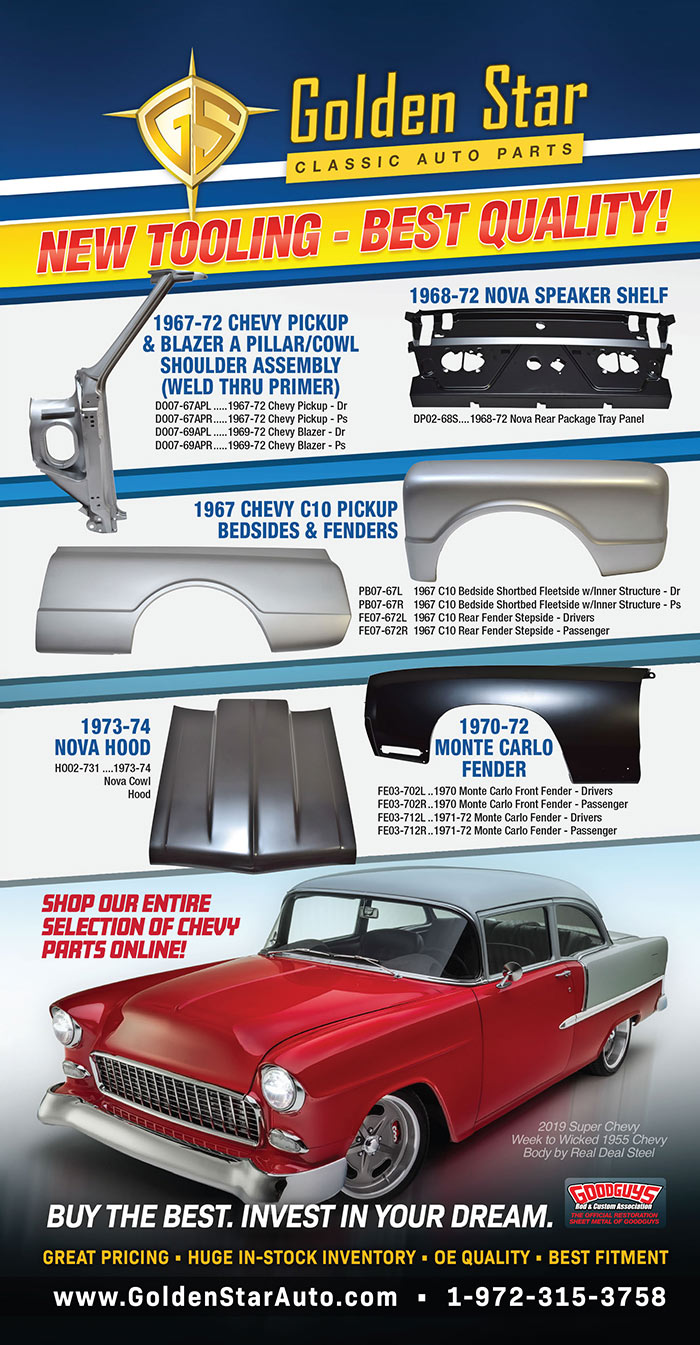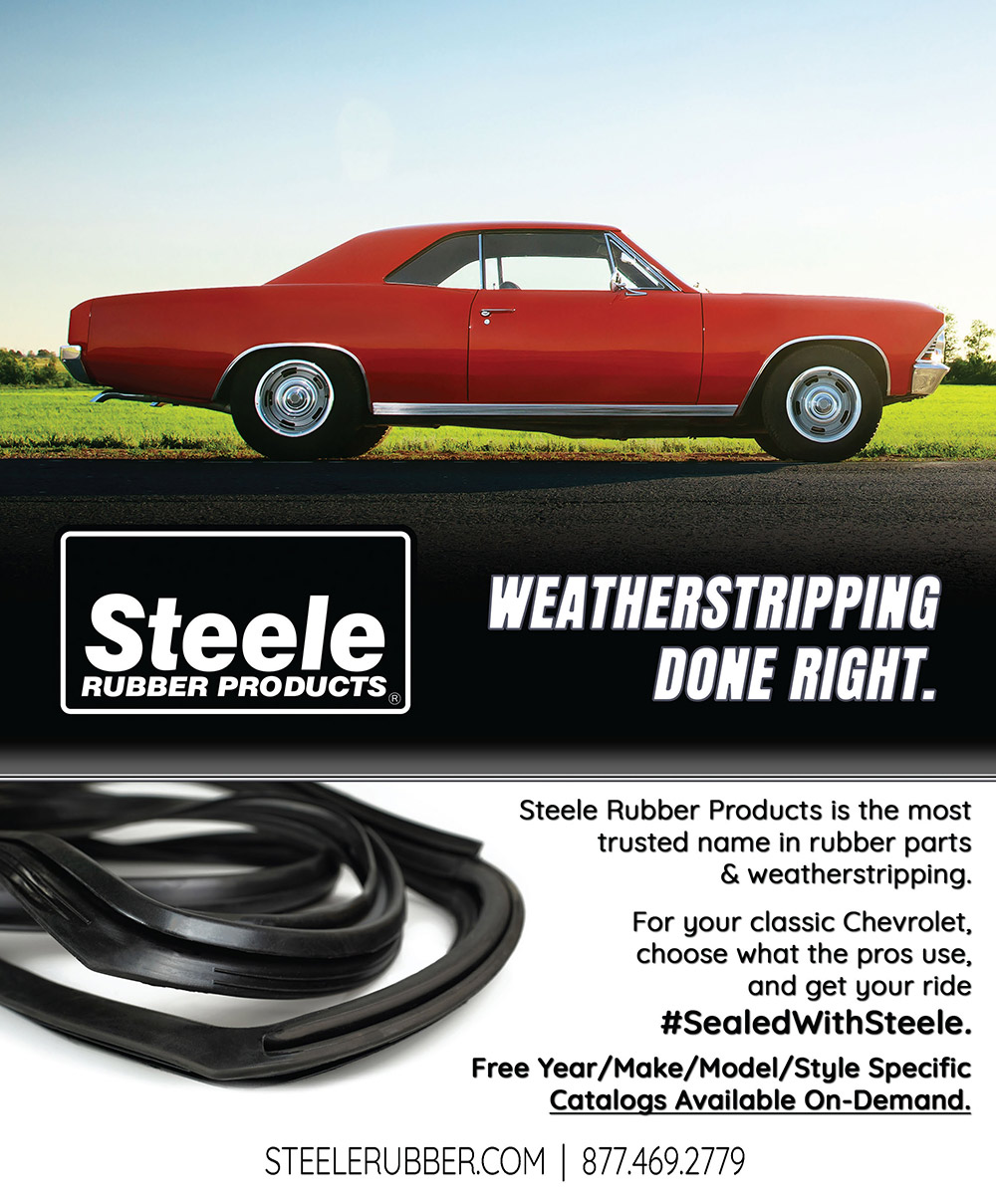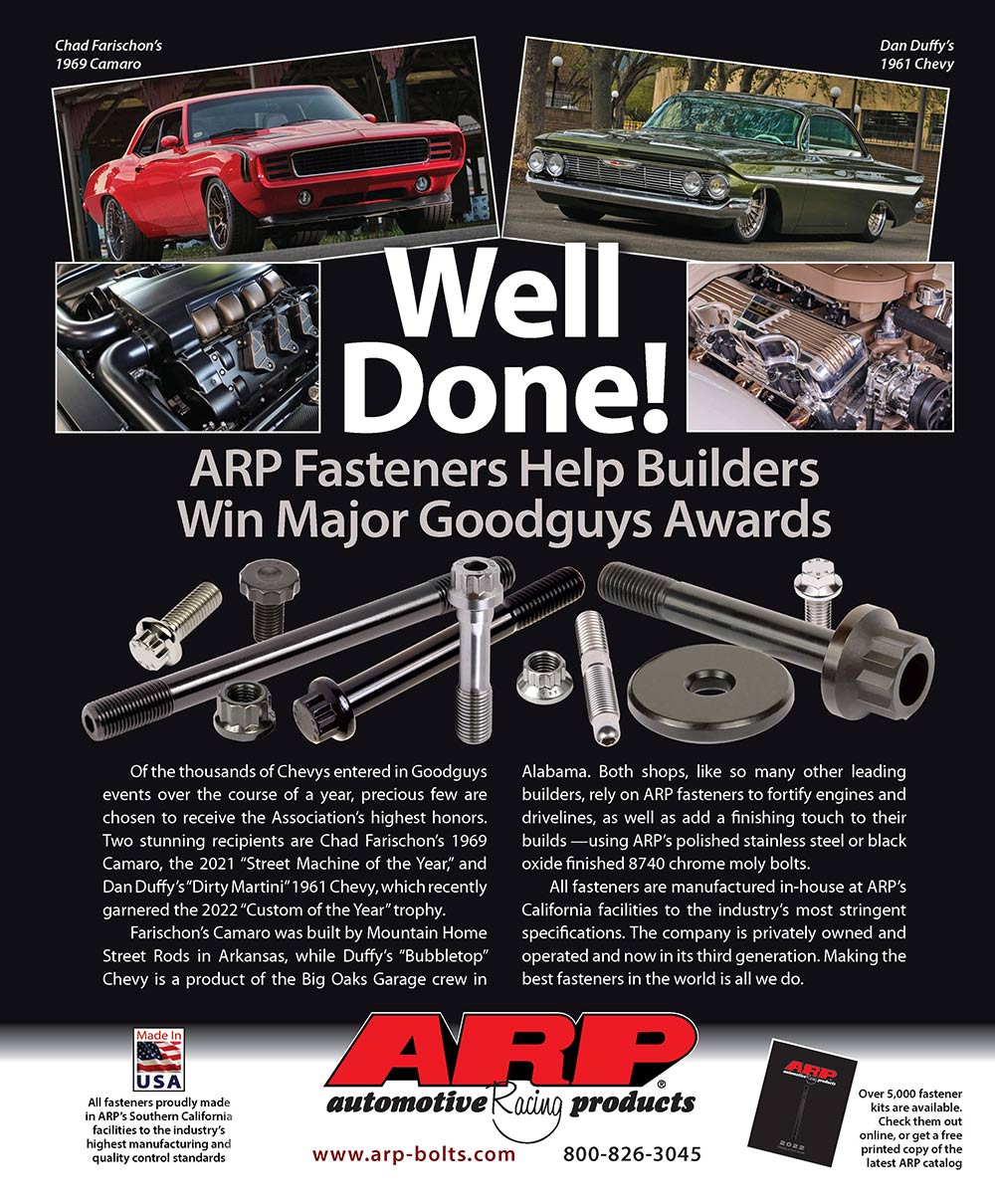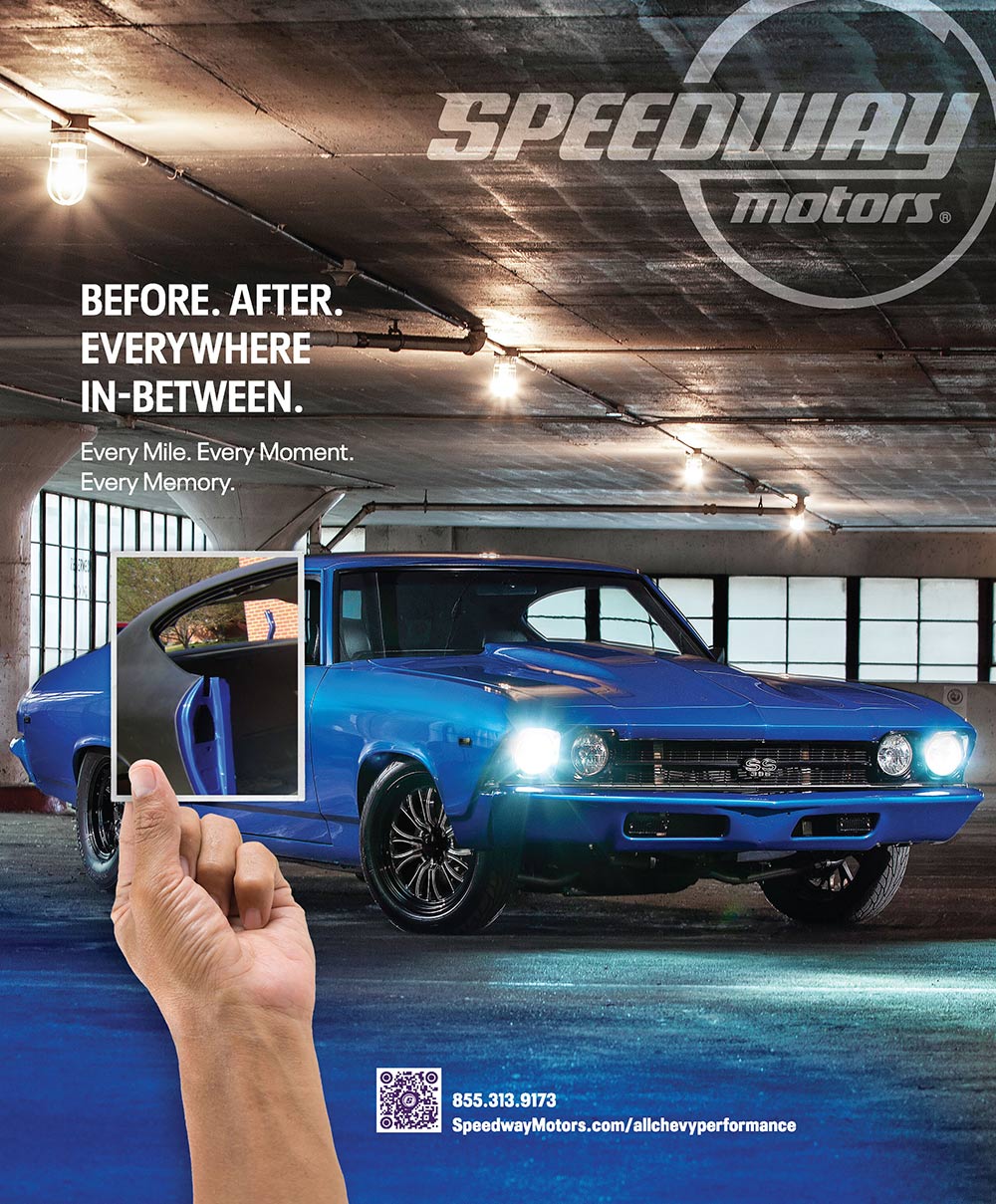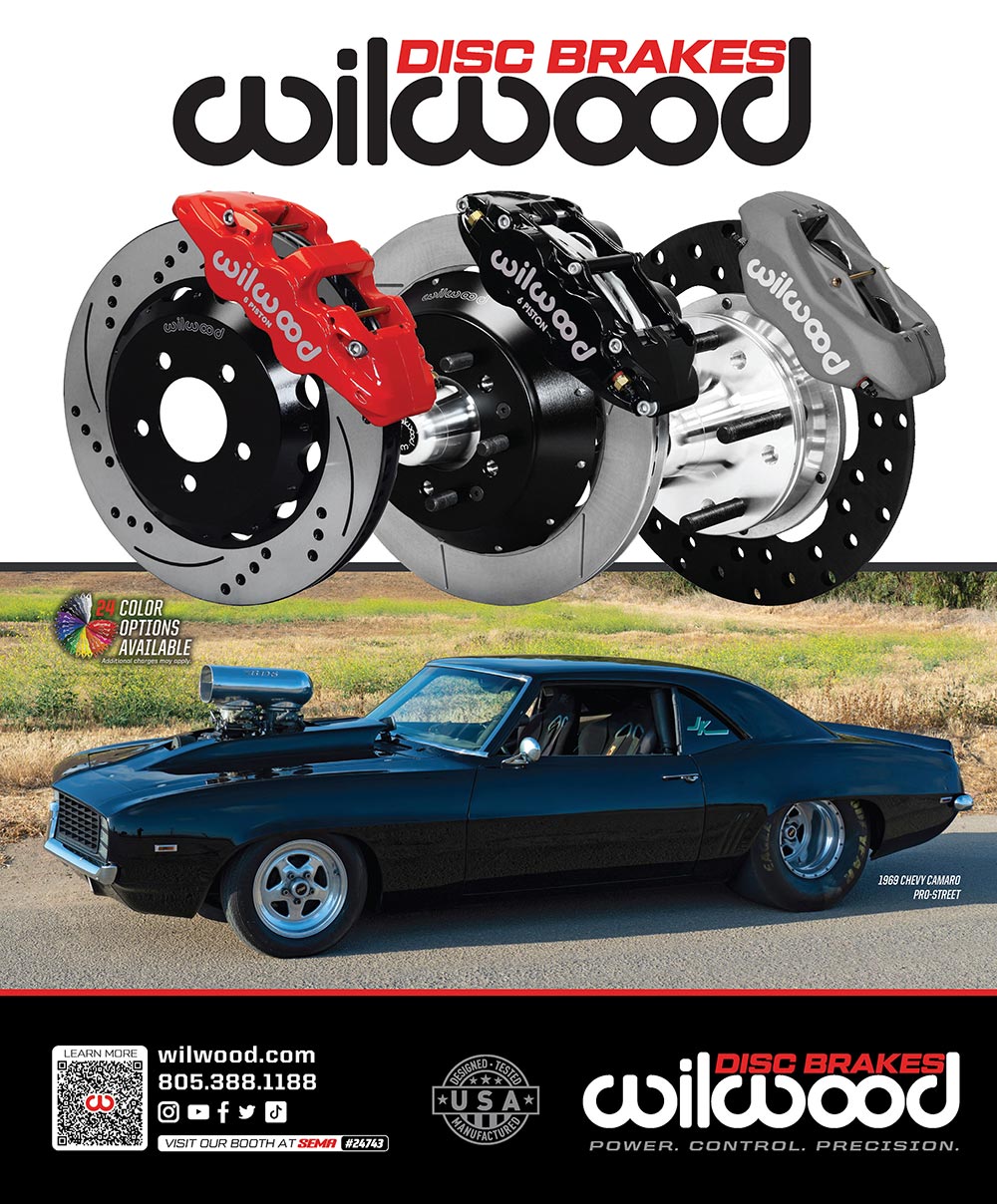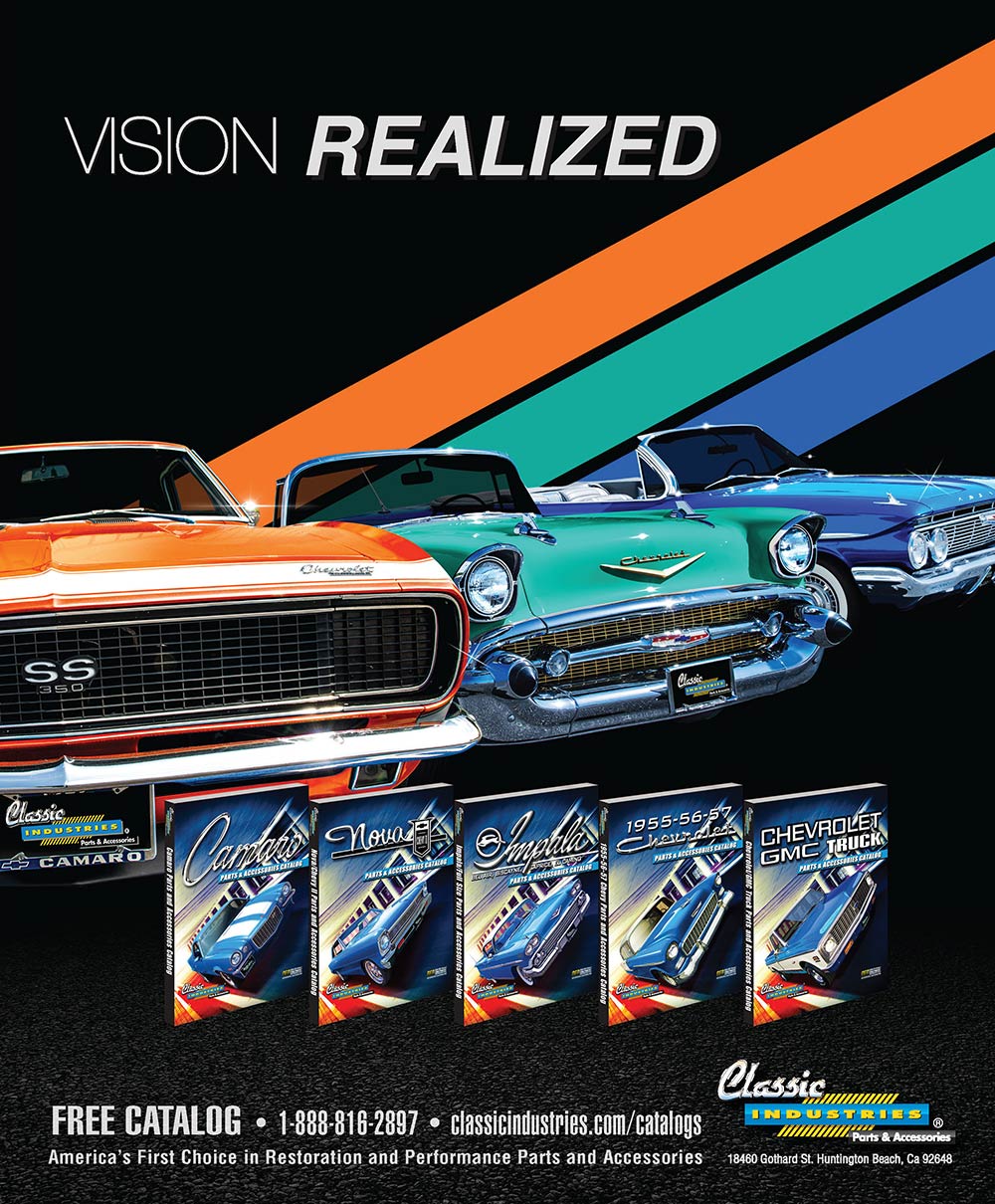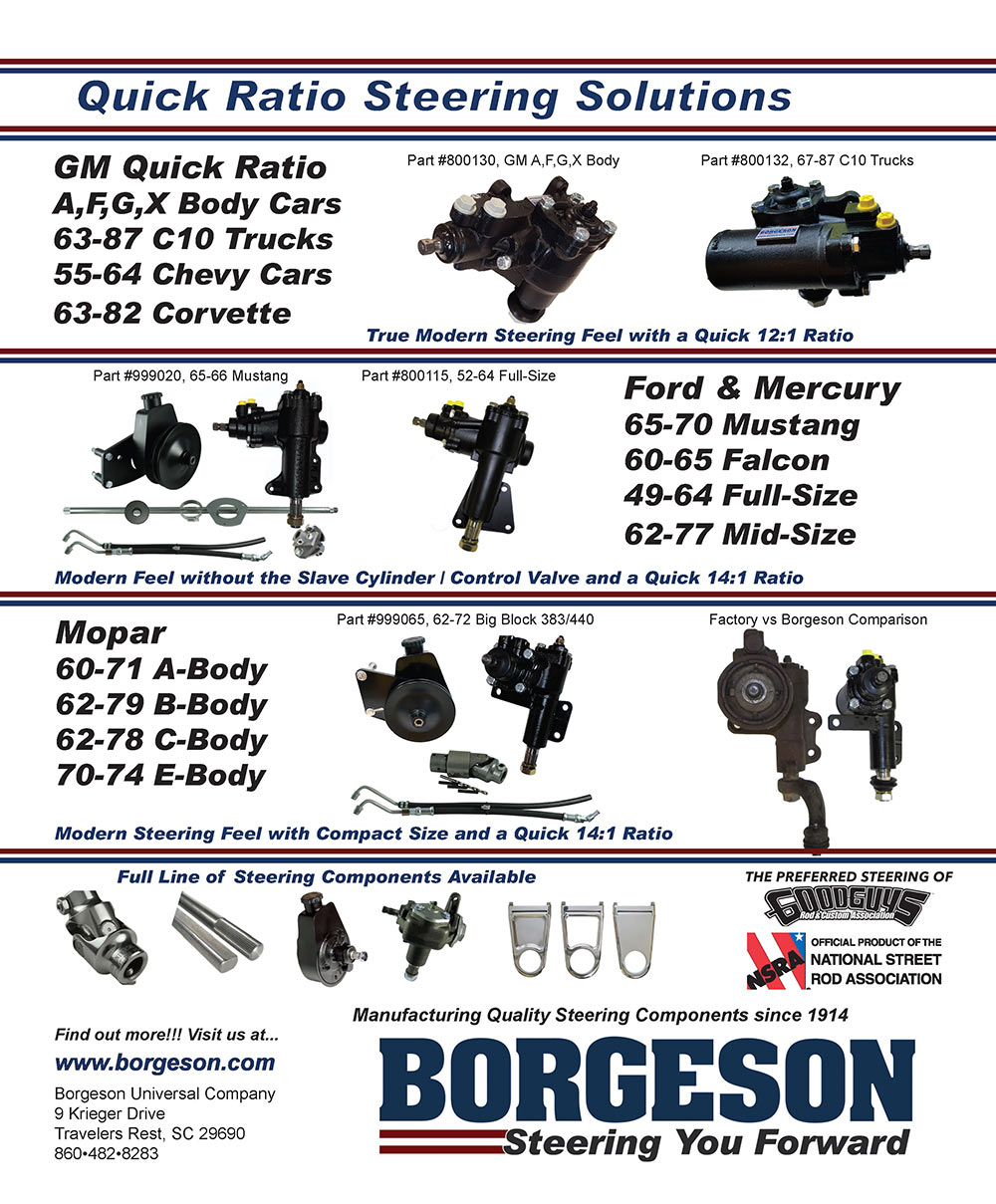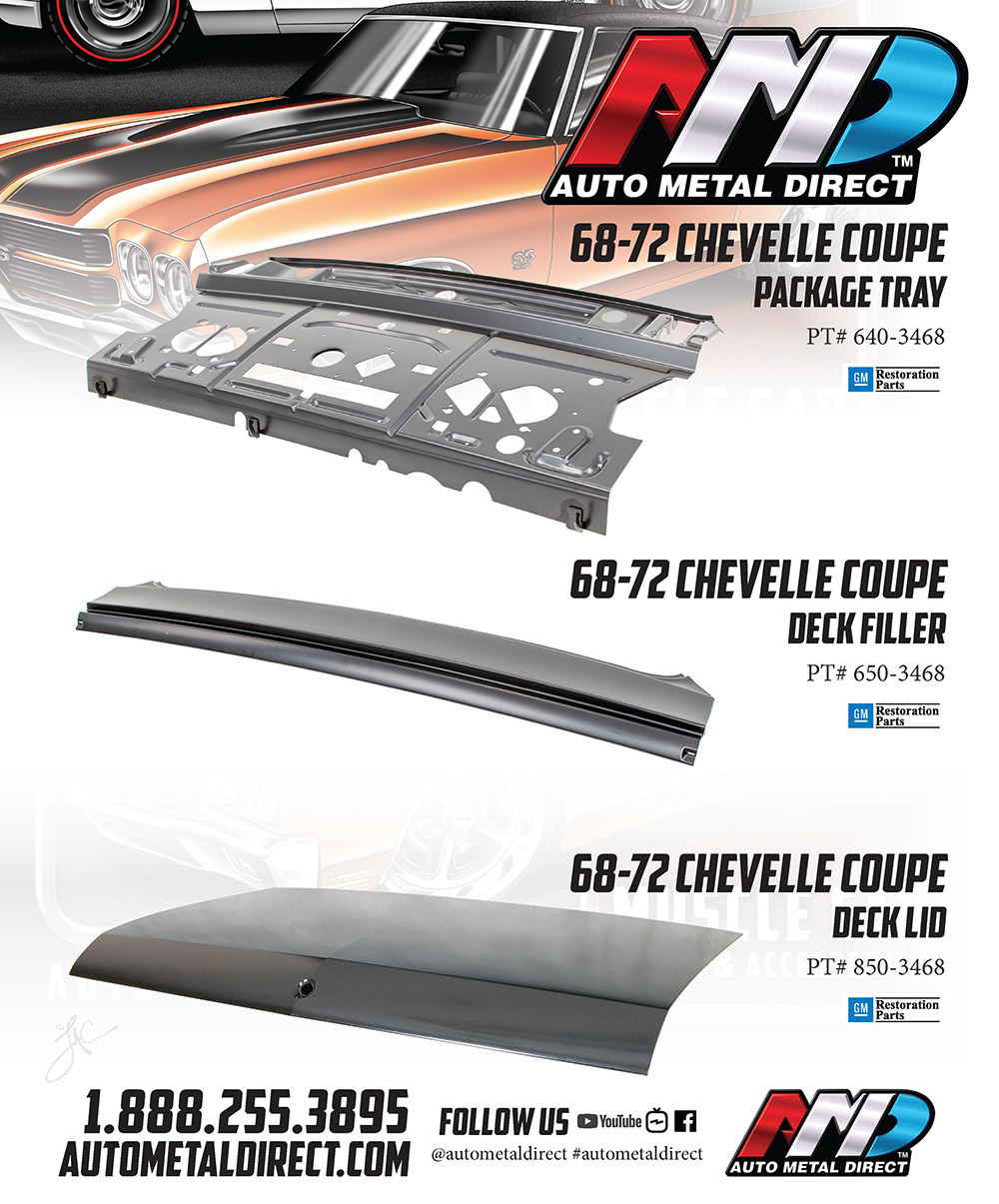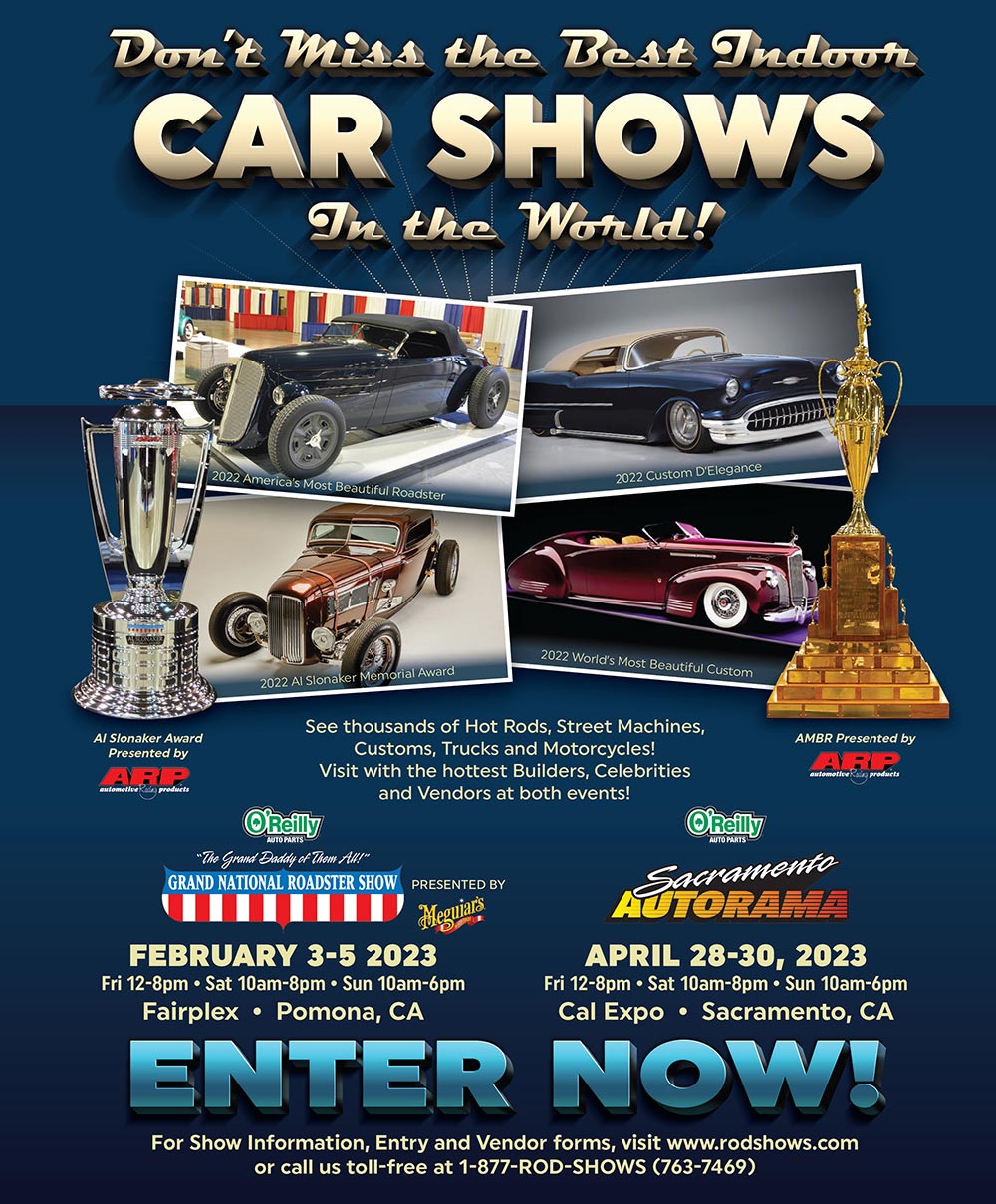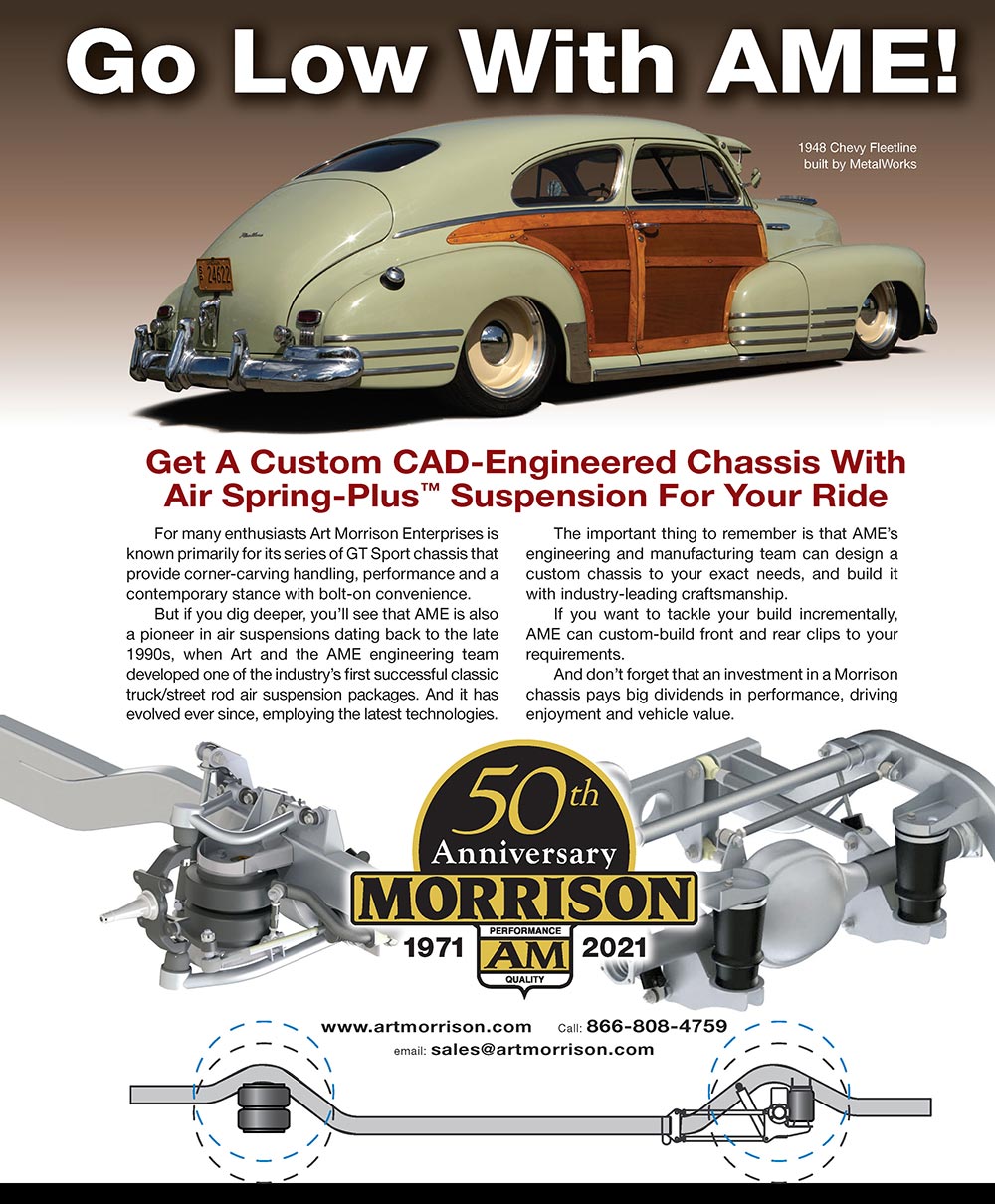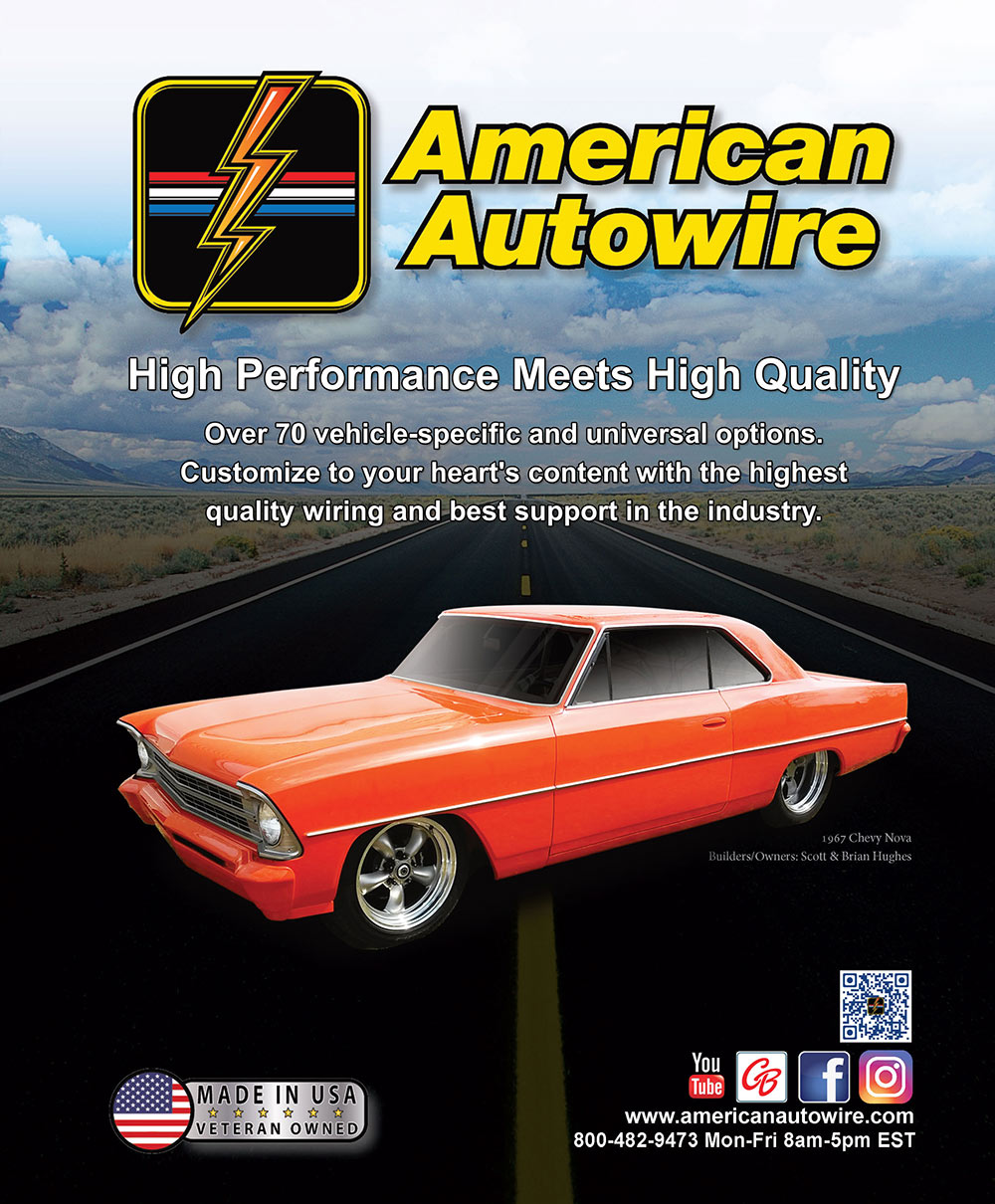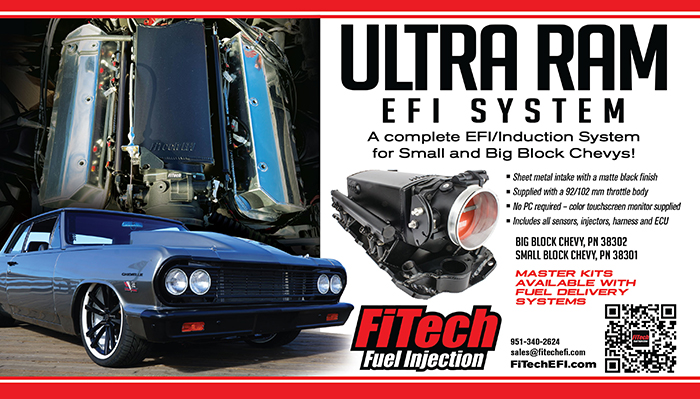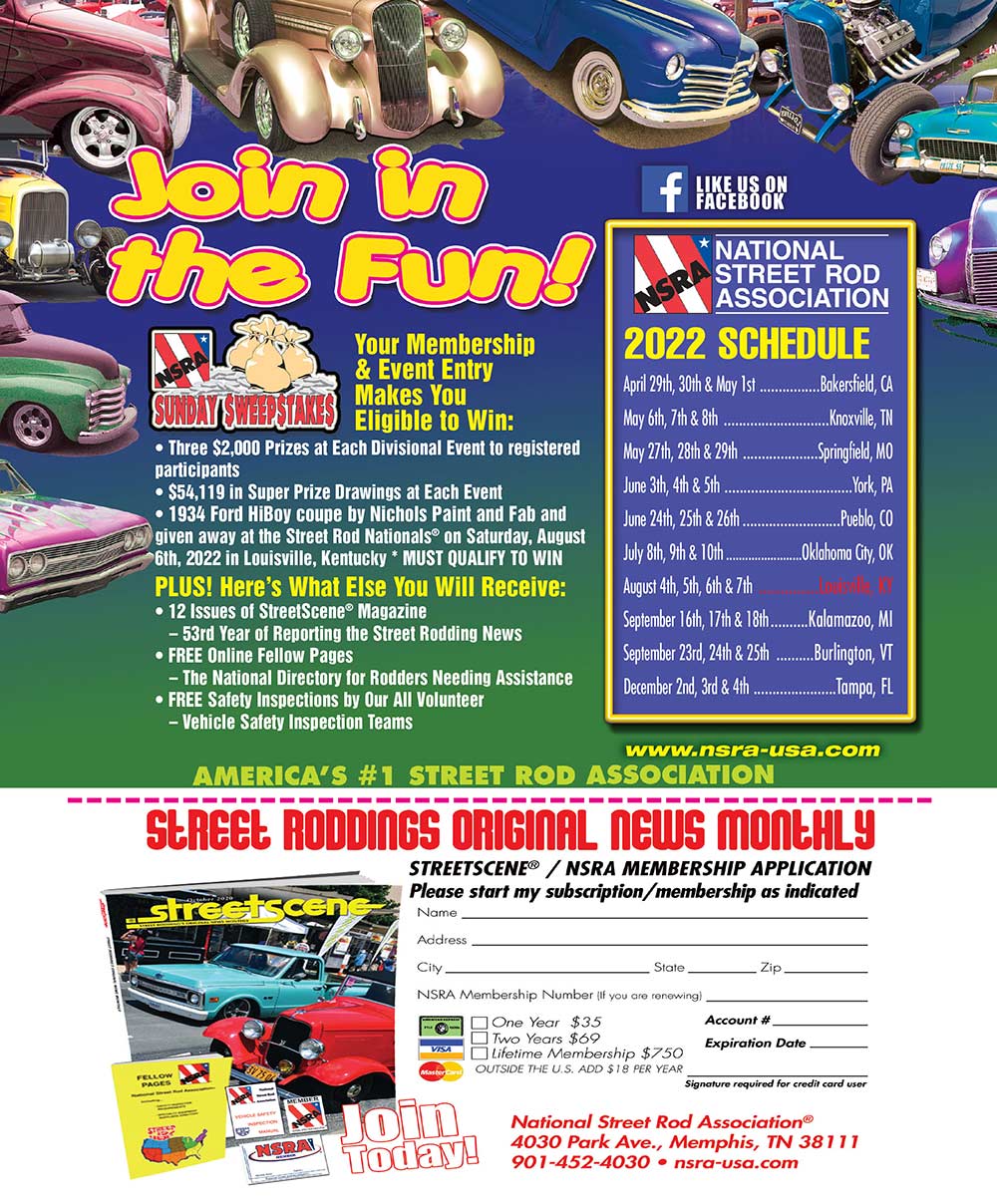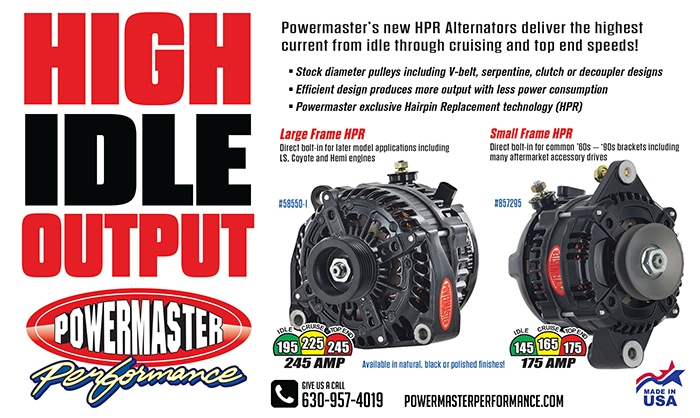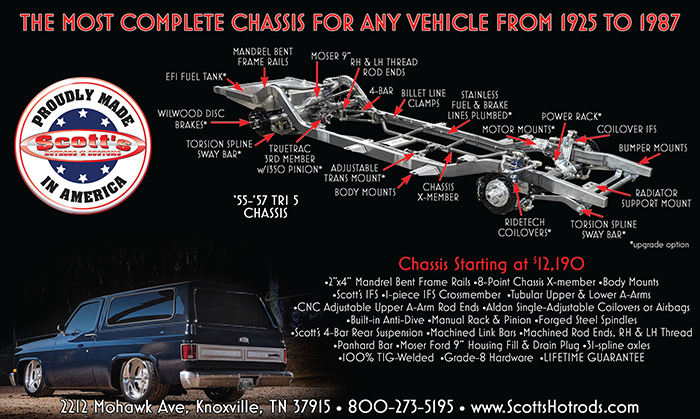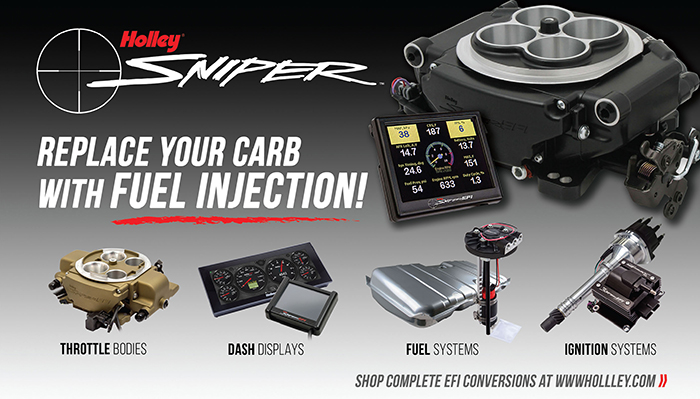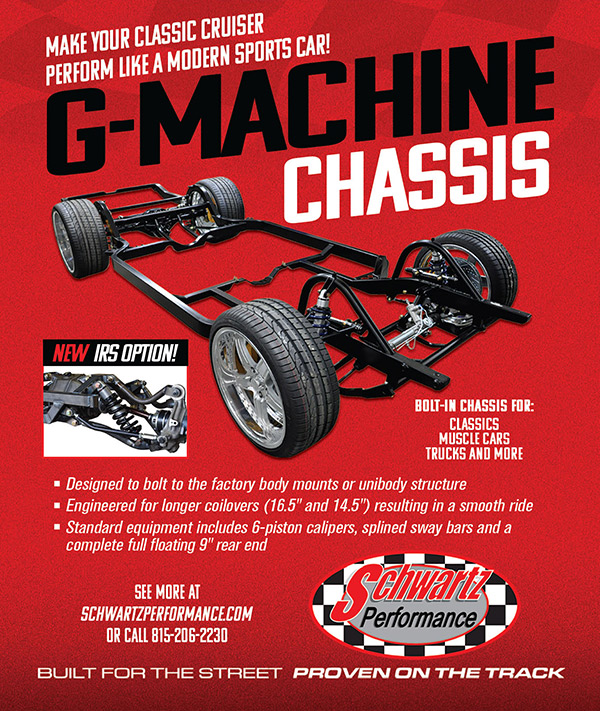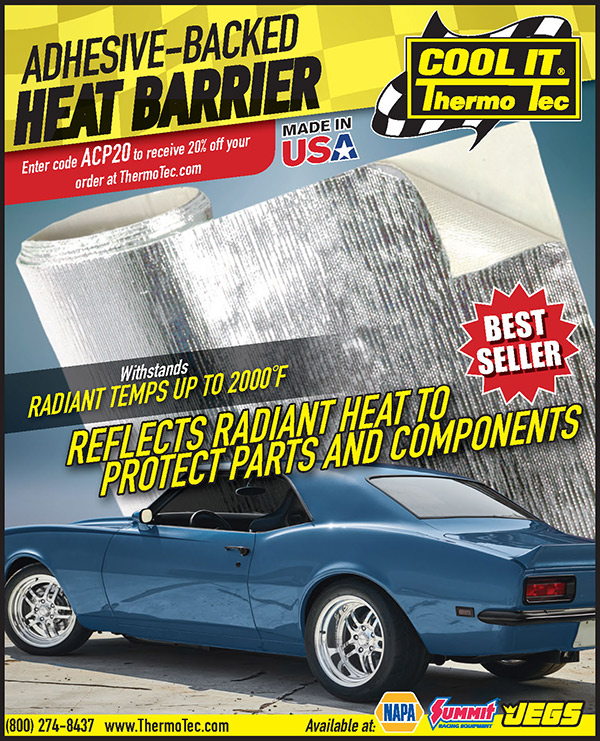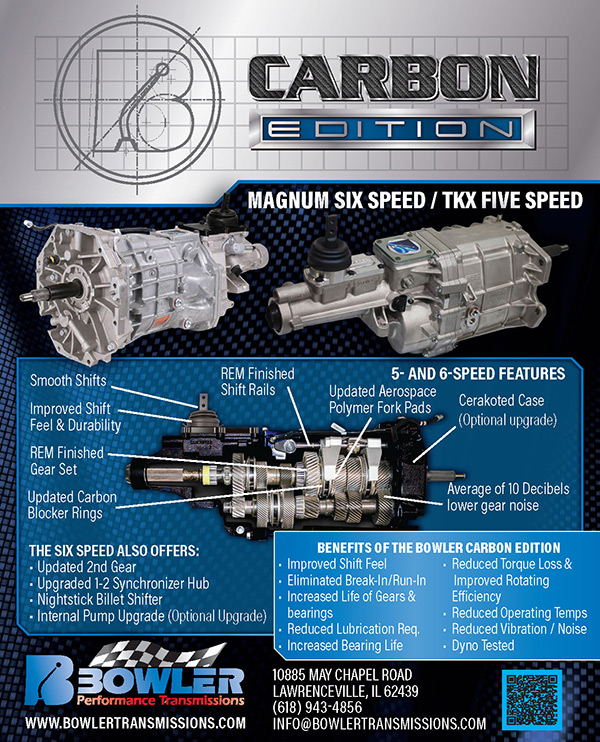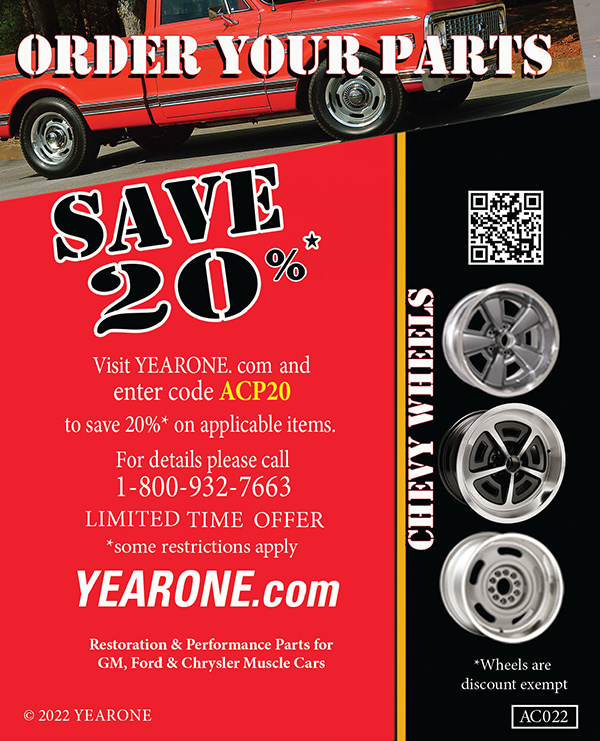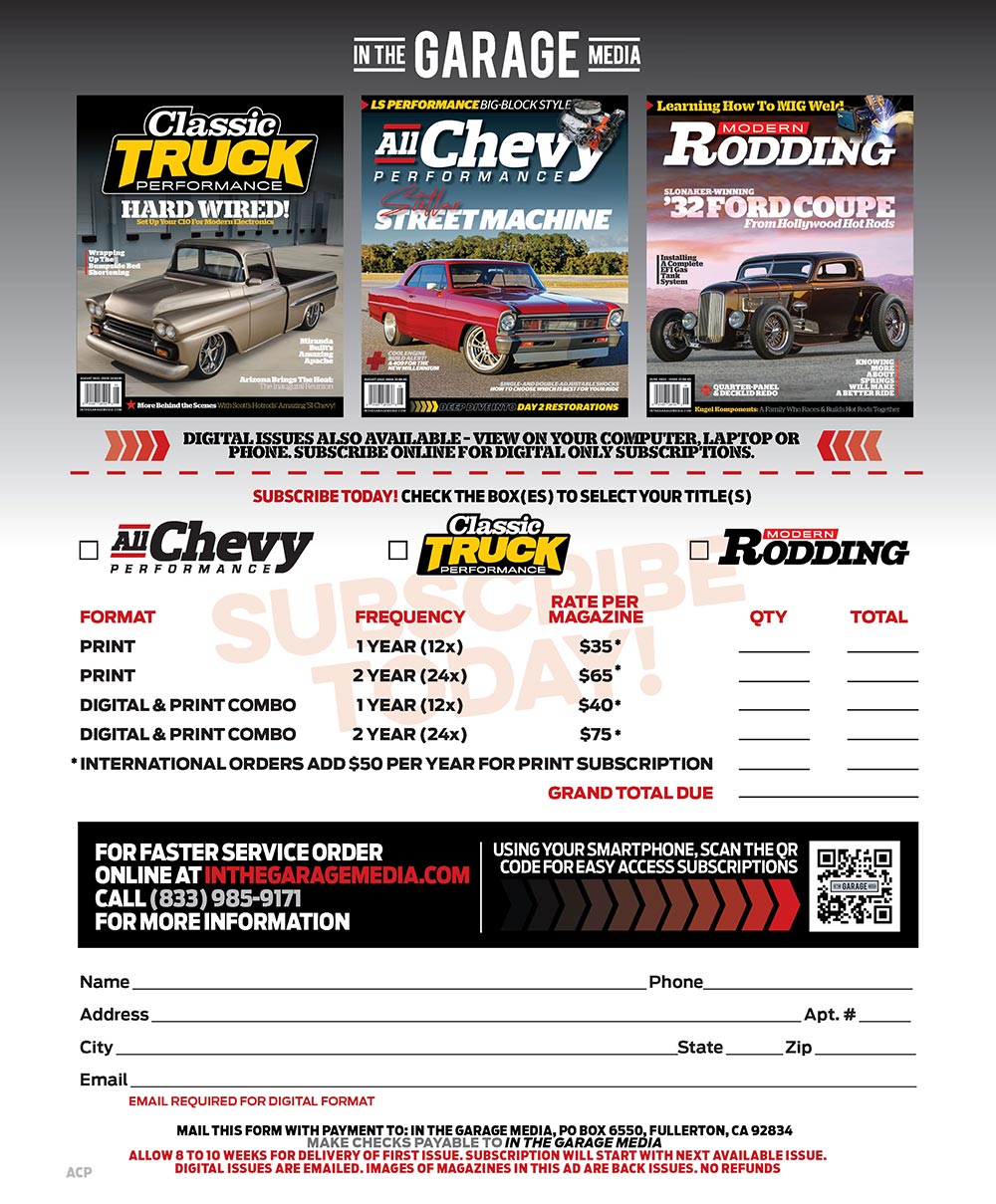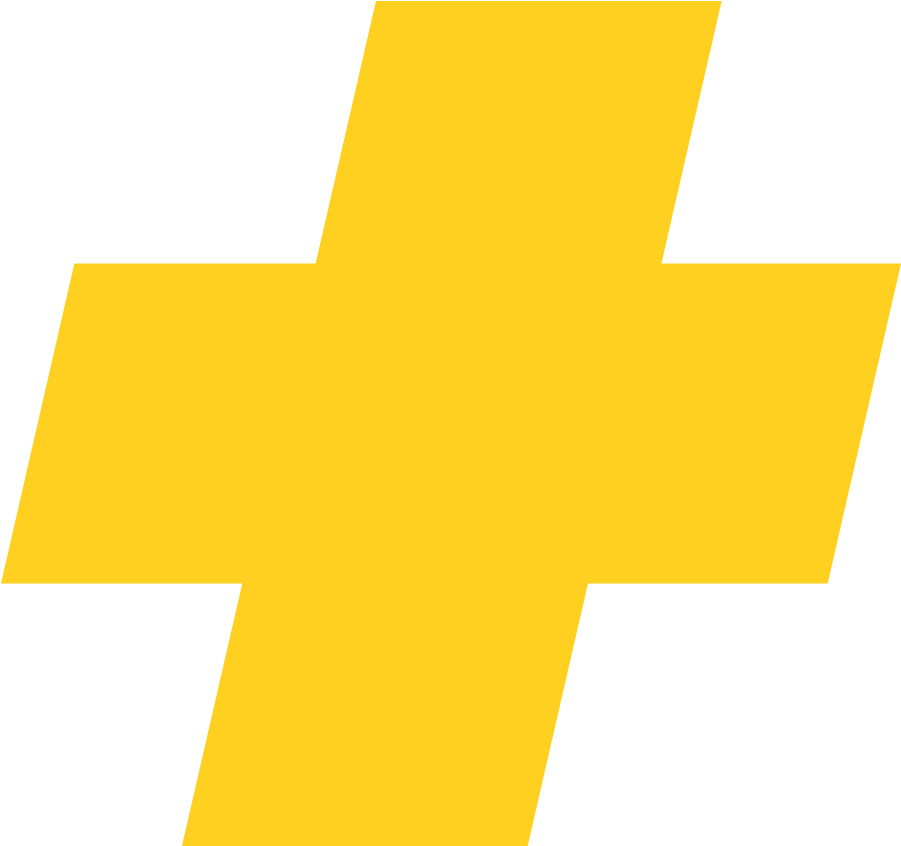
 TOC
TOC
Photo by John Jackson


Part 1: The Short-Block
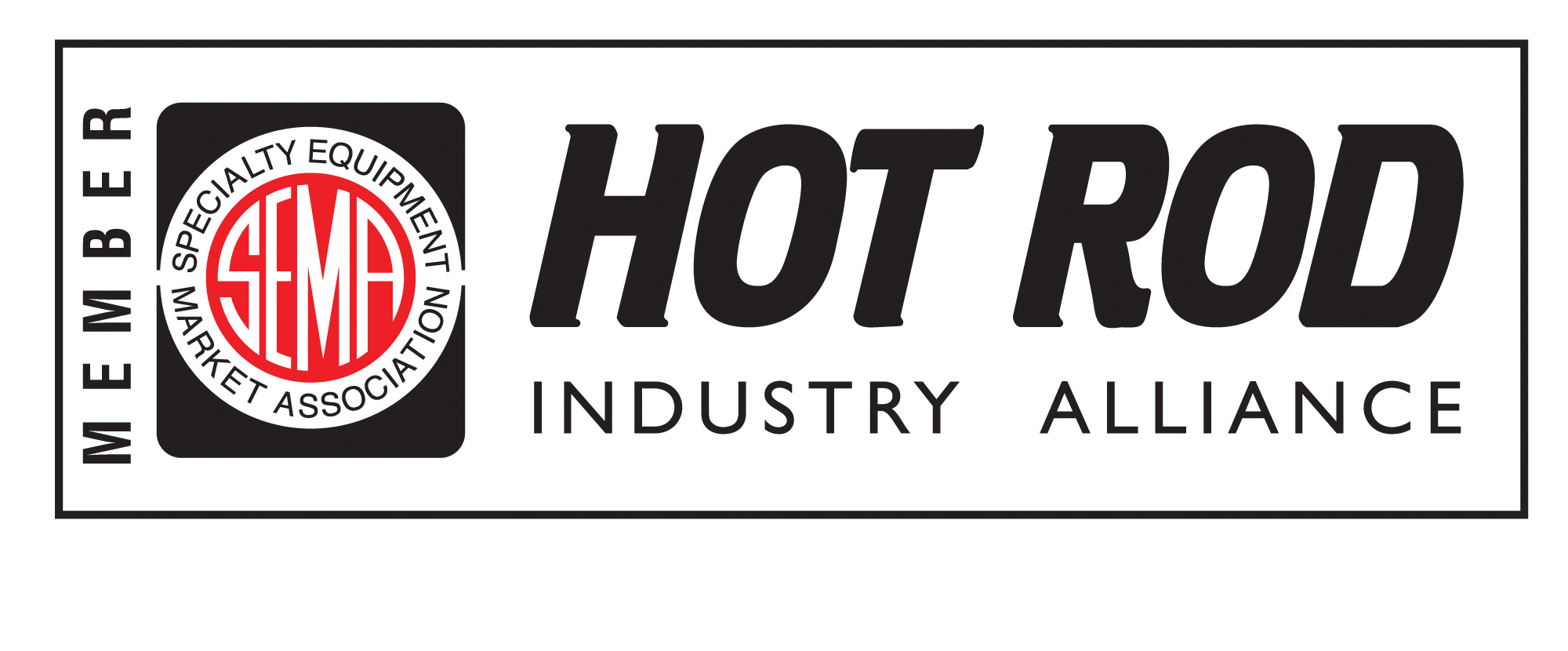


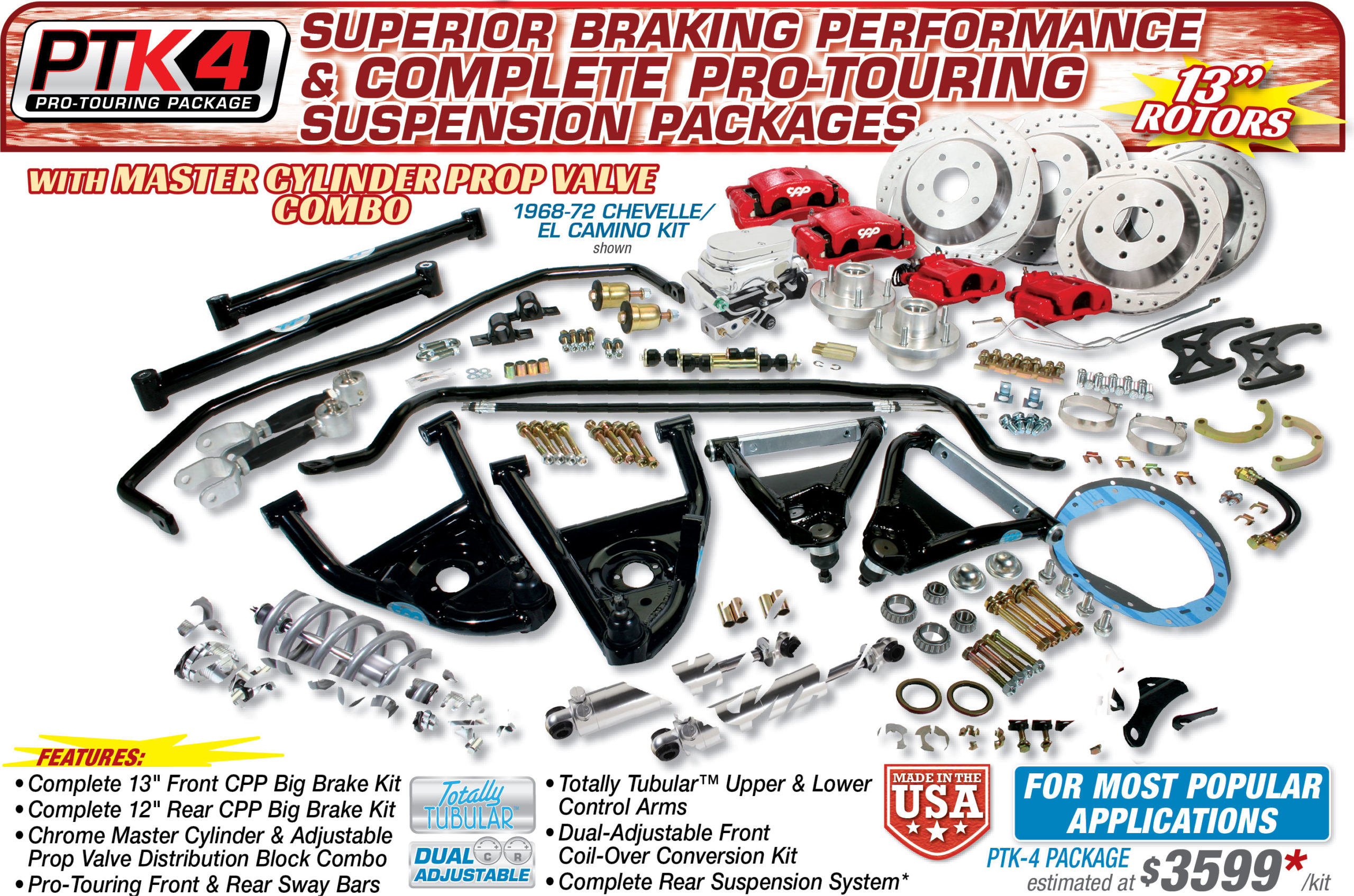


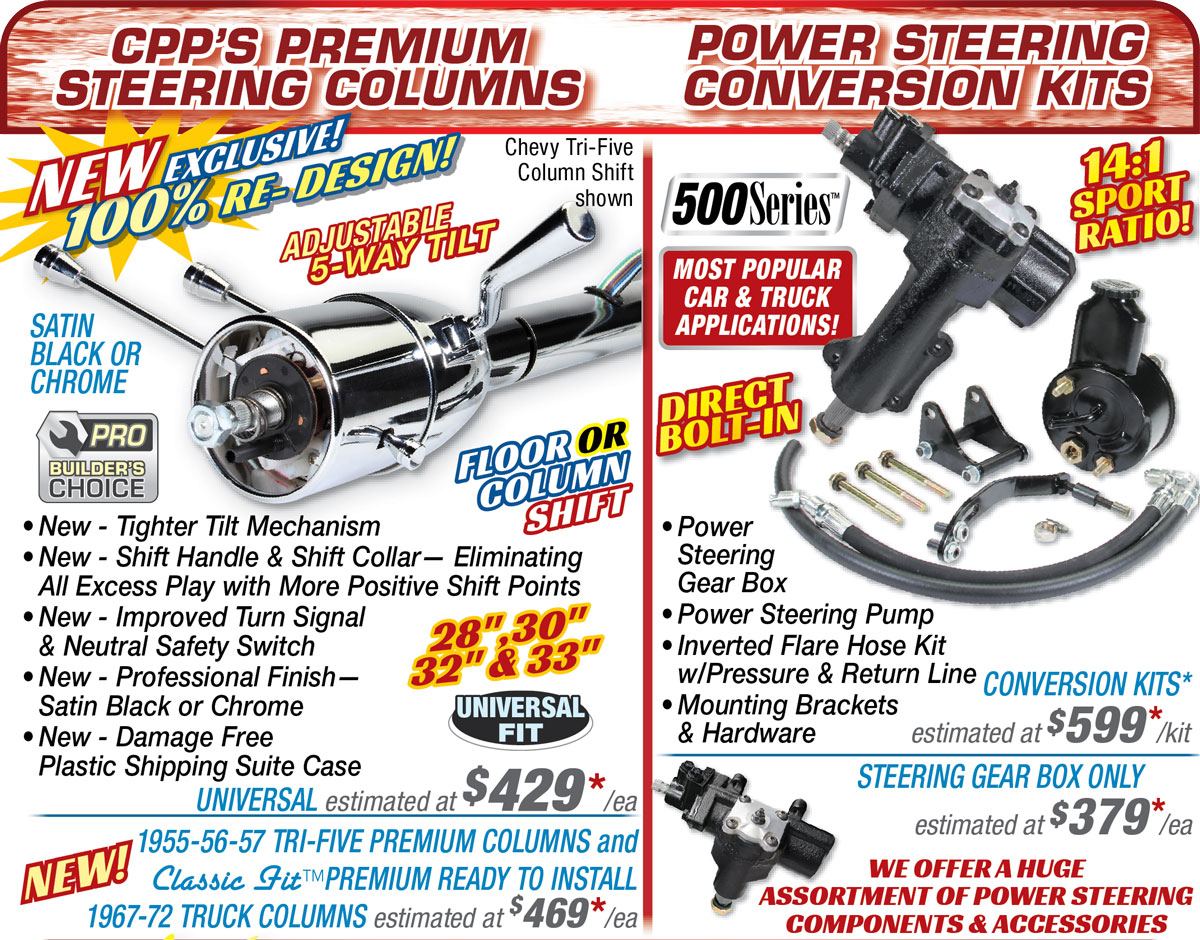
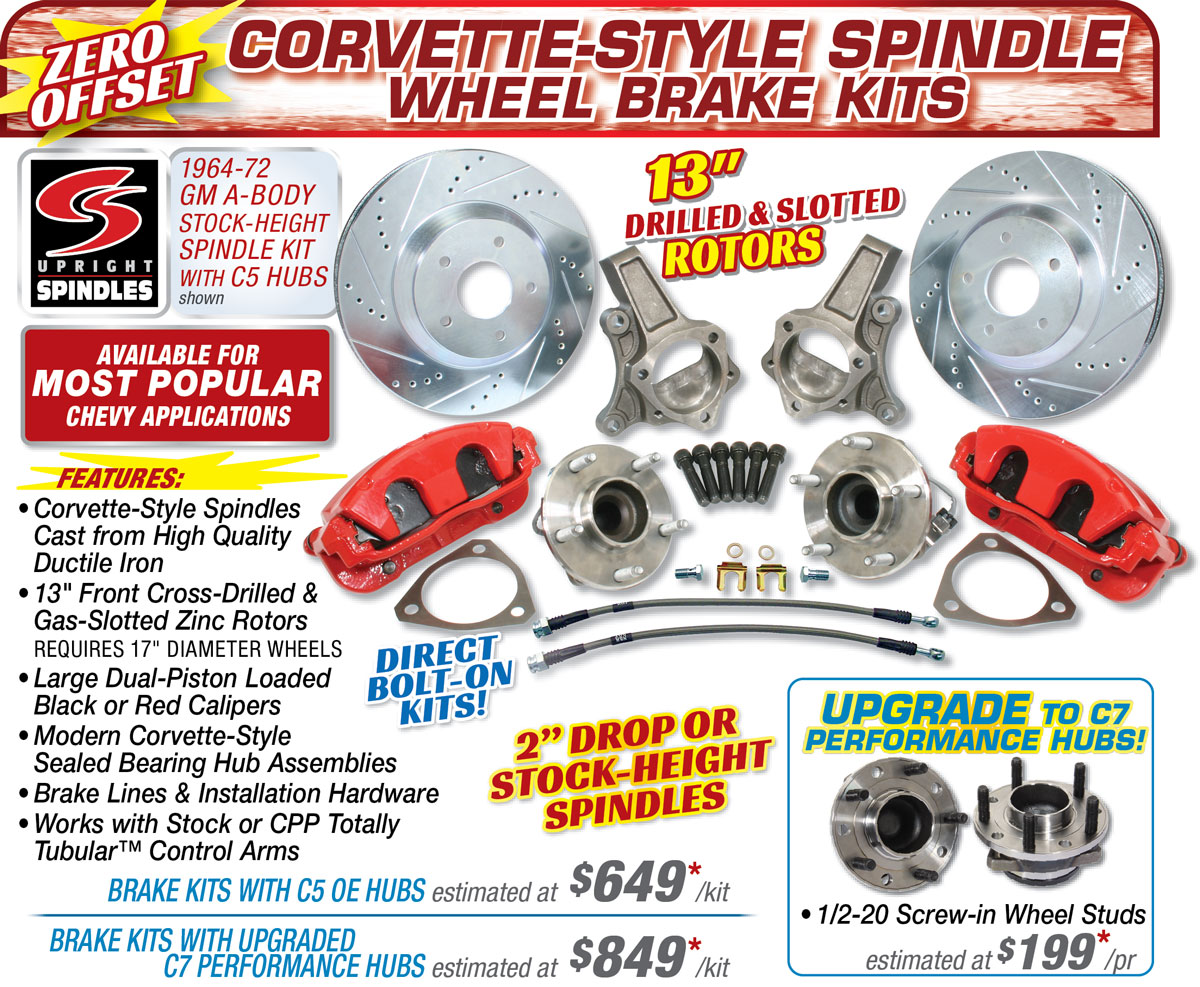
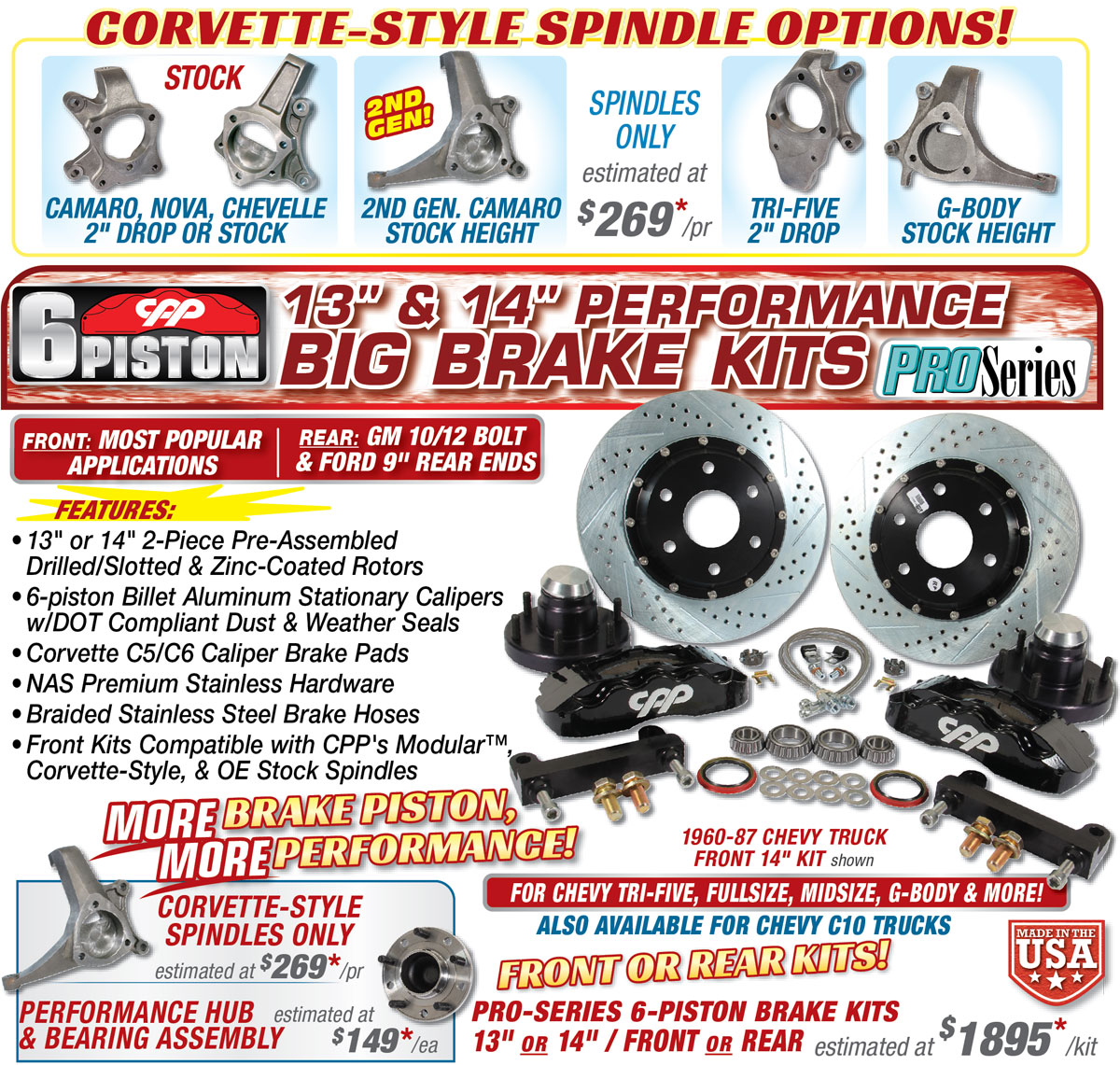

378 E. Orangethorpe Ave. Placentia, California 92870
#ClassicPerform

Wes Allison, “Rotten” Rodney Bauman, Shawn Brereton, Tommy Lee Byrd, Ron Ceridono, Grant Cox, John Gilbert, Tavis Highlander, Jeff Huneycutt, Barry Kluczyk, Scotty Lachenauer, Jason Lubken, Ryan Manson, Jason Matthew, Josh Mishler, Evan Perkins, Richard Prince, Todd Ryden, Jason Scudellari, Jeff Smith, Tim Sutton, and Chuck Vranas – Writers and Photographers
Travis Weeks Advertising Sales Manager
Mark Dewey National Sales Manager
Patrick Walsh Sales Representative
John Viscardo Sales Representative
ads@inthegaragemedia.com
AllChevyPerformance.com
ClassicTruckPerformance.com
ModernRodding.com
InTheGarageMedia.com
inthegaragemedia.com “Online Store”
For bulk back issues of 10 copies or more, contact store@inthegaragemedia.com
info@inthegaragemedia.com
Editorial contributions are welcomed but editors recommend that contributors query first. Contribution inquiries should first be emailed to info@inthegaragemedia.com. Do not mail via USPS as we assume no responsibility for loss or damage thereto. IN THE GARAGE MEDIA reserves the right to use material at its discretion, and we reserve the right to edit material to meet our requirements. Upon publication, payment will be made at our current rate, and that said, payment will cover author’s and contributor’s rights of the contribution. Contributors’ act of emailing contribution shall constitute and express warranty that material is original and no infringement on the rights of others.

Copyright (c) 2022 IN THE GARAGE MEDIA.
PRINTED IN U.S.A.


 FIRING UP
FIRING UP
 BY NICK LICATA
BY NICK LICATA
o you ever wonder what happens to all the old magazine feature cars after they’ve had their moment in the limelight? I do, all the time. Probably a little too much. Being a vintage car magazine nut I tend to think about all the wild, influential Pro Street and Street Freak Chevys from the ’70s and ’80s and can’t help but wonder where they are today. Were they sent to a faraway island where past-their-prime muscle cars go to die? Did they just fall off the end of the earth? I’d like to know.
As build styles and trends change with time, I’m aware many of those cars were no longer relevant and sold to new owners who likely stripped them down and started from scratch to rebuild them with the latest aftermarket bits to fit in with the flavor of the day. I also have this feeling that some of those great old magazine feature cars have been slumbering for decades in the back of a garage under a moving blanket with a box of old metal records stacked on the hood.
As with fashion trends, what once was old has a way of sneaking back around attempting to be cool again. Case in point, the Mullet. Although the once-popular haircut is making a comeback, thankfully it’s not nearly as popular as it was in 1982. This little resurgence would be better left in the ’80s if you ask me.
 Parts Bin
Parts Bin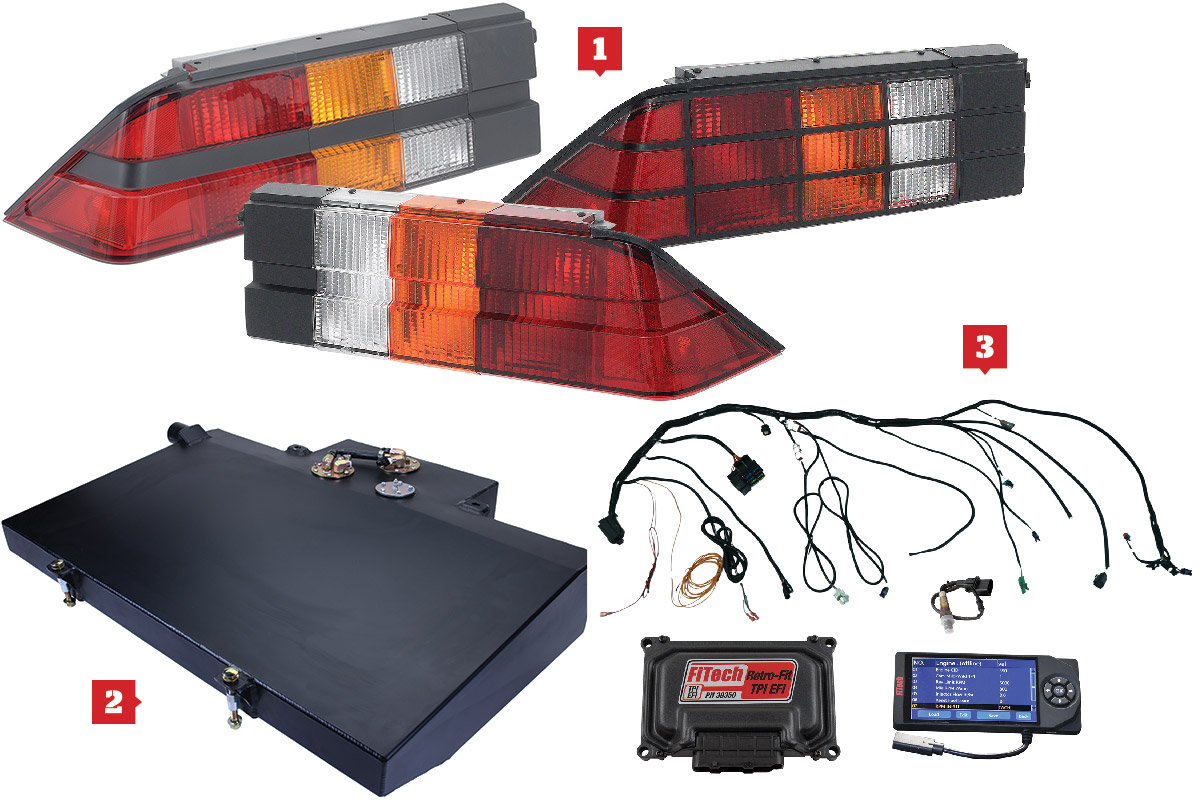


For more information, contact Classic Industries by calling (888) 816-2897 or visit classicindustries.com.

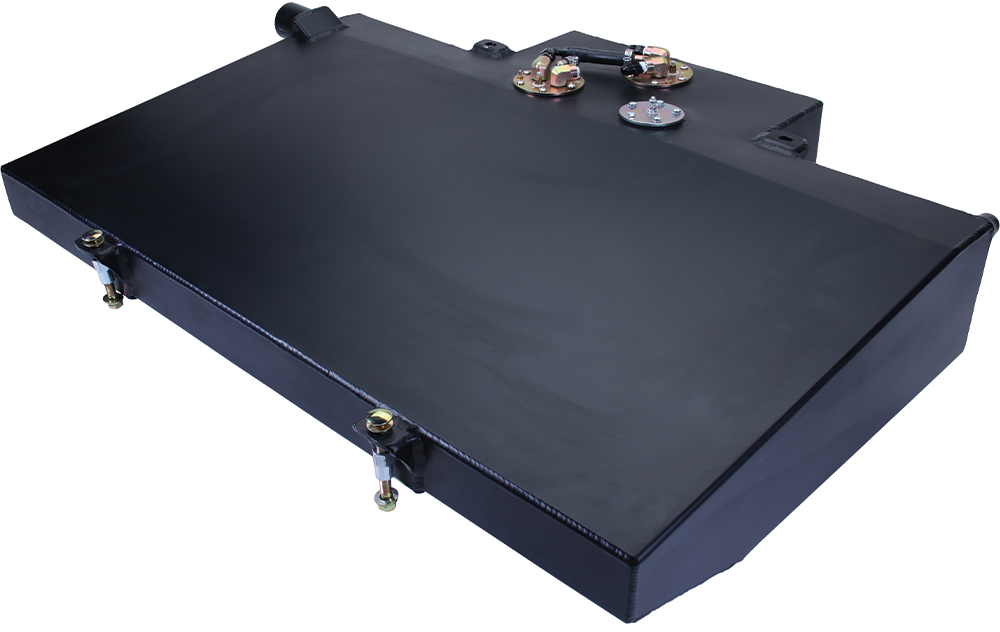
For more information, contact CPP by calling (833) 710-8791 or visit classicperform.com.

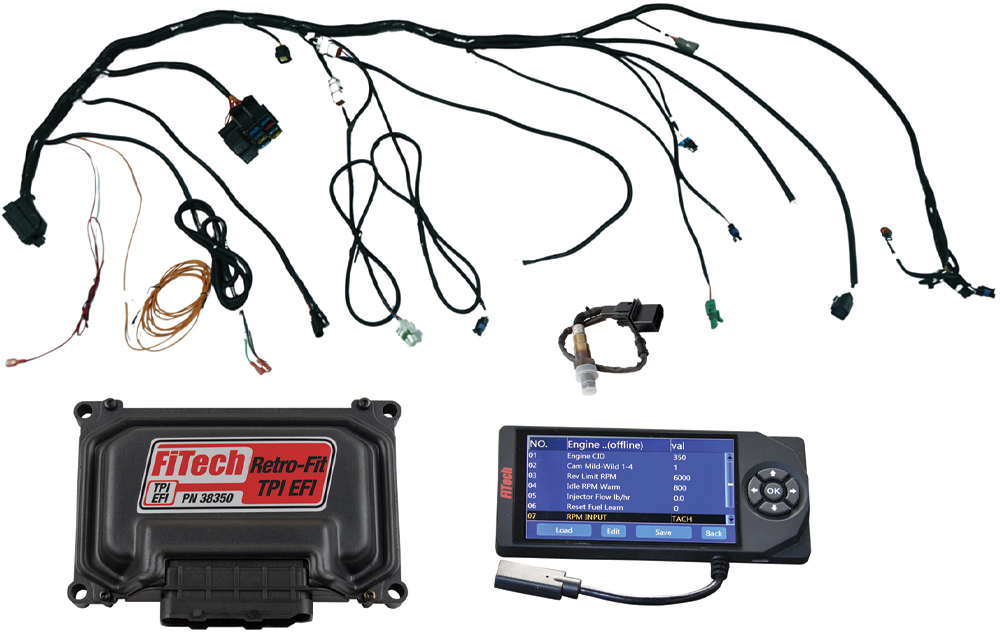
For more information, contact FiTech Fuel Injection by calling (951) 340-2624 or visit fitechefi.com.
 CHEVY CONCEPTS
CHEVY CONCEPTS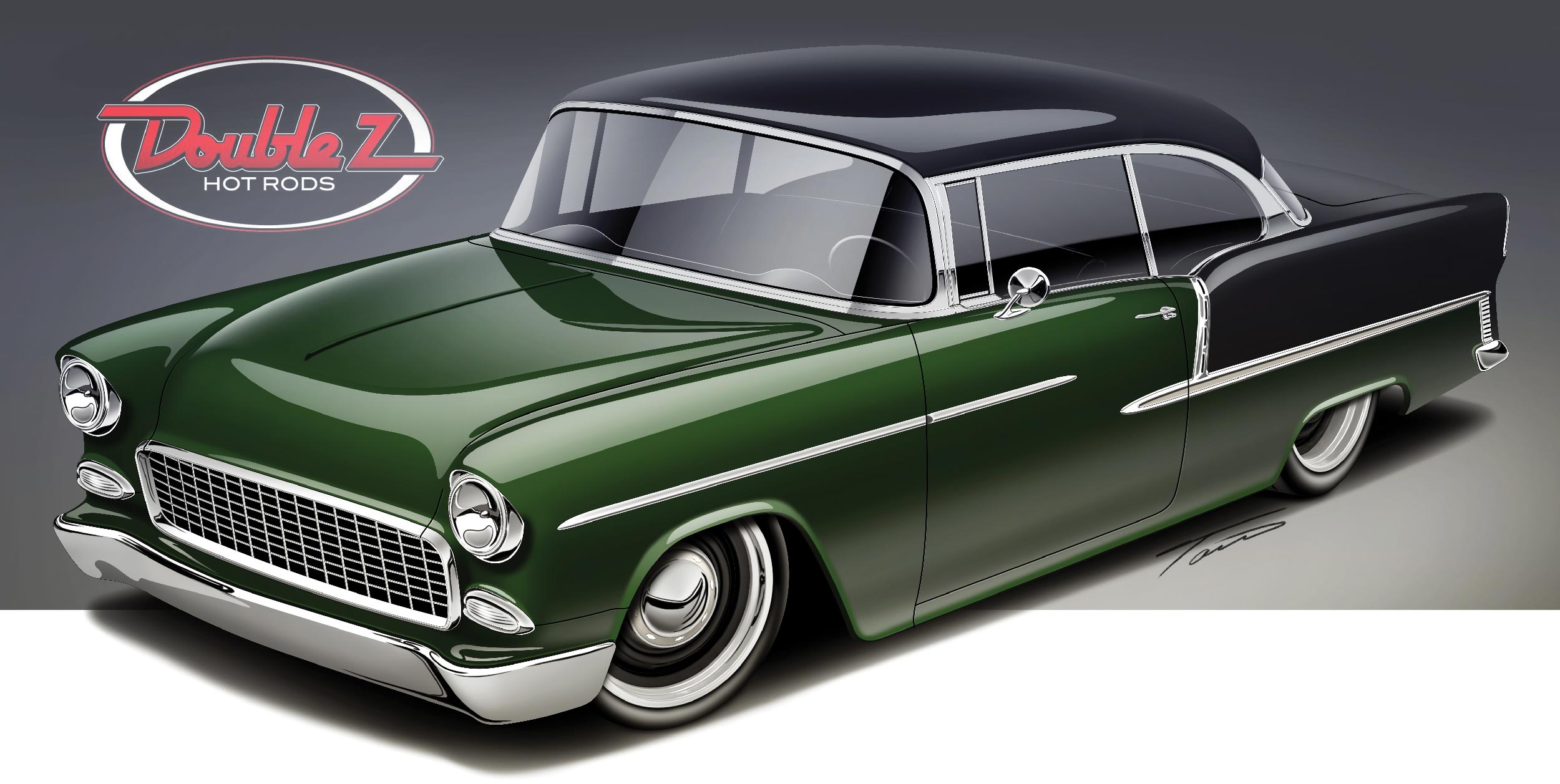

 Text and Rendering by Tavis Highlander
Text and Rendering by Tavis Highlander
uss Zulim and the crew at Double Z know how to build a clean, high-end hot rod. This current project is going to be a fine example of just that. Most of the trim will be kept, but the hood trim will be deleted to slick the front end up a bit. The front bumper also gets flipped and tucked to further the clean styling.
A wicked low stance is thanks to some modern chassis components, but the rest of the exterior gives off a classic vibe. Billet Specialties wheels in 19- and 20-inch sizes with Chevy hubcaps really pull off the look. A subdued and classy dark green paint with black rear quarter and roof accents top it all off.

 @TavisHighlander
@TavisHighlander Vehicle Builder: Double Z Hot Rods, Dinuba, California
Vehicle Owner: Rafael Alvarez
 FEATURE
FEATURE

 Photography BY JOHN JACKSON
Photography BY JOHN JACKSONot big into first-gen Camaros, Sam Landis sort of shied away from what many muscle car enthusiasts consider the most popular cars of the Ponycar era. It just wasn’t his thing. Well, that was until he spotted his buddy’s ’68 back in 1999. “I was 18 when I first saw the car,” Sam tells. “I immediately fell in love as it was the first one I saw that didn’t have the stance of a John Deere tractor. This one had flared fenders all around with big rubber on all four corners. It looked like a race car that could do more than go straight down a dragstrip—something I’d never seen before.”
That buddy was Scott Luscombe. His dad, Lou, bought the car some time in the ’70s for $350. It was an original RS/SS with a four-speed and a seized big-block. Over time, Lou worked on the car, put in a rowdy-sounding small-block, tidied it up inside, and fabricated a set of flared fenders for a Trans Am look of the era. He promised Scott, he’d give him the car as a graduation gift if he’d nail down some solid grades. Scott did and the car was his.
“The car blew my mind, and I told Scott that if he ever wanted to sell it to let me know first,” Sam says. “Scott thought that was funny because I was making about $7 an hour working at a car wash at the time and there was no way I could afford it.”
 TECH
TECH Photography by The Author
Photography by The Author
hevrolet Performance’s all-new ZZ632 crate engine is simply the biggest, baddest, and most powerful big-block ever from Chevrolet. It’s rated at a stunning 1,004 hp and 860 lb-ft of torque—with Pro Stock–inspired spread-port cylinder heads and other modern technologies that enable that incredible performance on 93-octane pump gas.
In fact, the ZZ632 is designed for dual-purpose performance. Electronic fuel injection, advanced ignition technology, and a carefully developed hydraulic roller camshaft profile contribute to a unique balance of great driveability on the boulevard, while the all-new RSX spread-port cylinder heads—named for Chevrolet Performance engineer Ron Sperry, who helped develop Chevrolet racing engines—support amazing high-rpm capability on the dragstrip.
“We challenged ourselves to take big-block street performance to the next level and 1,000 hp on pump gas was it,” Alin Dragoiu, Chevrolet’s design release engineer for the engine, says. “The ZZ632 has dual capabilities, but it was first and foremost designed as a street engine, so we had to balance maximum power with idle quality and other such considerations.”
 FEATURE
FEATURE

 Photography BY The Author
Photography BY The Authorivision seems to pervade our world these days. No matter the topic, from the most contentious political issue to which fast food chain has the best chicken sandwich, everything seems to be framed for us in either/or propositions—right or wrong, black or white.
It doesn’t have to be that way. Life is truly about shades of gray. Just because you prefer a cold Miller on a hot summer’s day doesn’t mean you have to reject a microbrewery’s hoppy IPA on your next night on the town. Each brings something different to the table and there’s room for both.
It’s the same with powering a project car. Small-blocks, big-blocks, and LS/LT engines bring different performance dynamics, and the choice one makes involves many different factors. Often, it boils down to personal preference.
That was the case with Brian Furness when it came to big-block power for his restomod ’70 Camaro.
It wasn’t a dig at the trendy LS swaps of recent years. Not at all. He simply wanted that incomparable low-end grunt that only a big-block can deliver.
 TECH
TECH
Part 2: Third-Gen Camaro Rear Suspension and Brakes and Rearend Upgrade

BY Chuck Vranas  Photography by The Author
Photography by The Author
here’s nothing better than dialing in your Chevy muscle car with a serious dose of V-8 power regardless of whether it’s naturally aspirated, supercharged, or packing turbos. As performance enthusiasts, big power always equal big fun—that is unless you get left by the side of the road with a driveline failure caused by a weak link. One of the most important performance upgrades you can make to your ride is making sure you can successfully move the dynamite through the driveshaft when you hit the go-pedal. The importance of a well-designed rearend, suspension, and brakes properly balances out the increase in power for maximum performance and dependability. This holds true for everything from motoring on the interstate, running hard at the dragstrip, and even carving curves through an autocross course.
Last month in All Chevy Performance, we visited Chris Cerce Customs (CCC) in Taunton, Massachusetts, where Cerce’s personal ride, a wicked third-gen Camaro, had recently undergone a serious driveline upgrade with an 850hp LS packing a BorgWarner 76mm turbo from Don Hardy Race Cars. Linked to a GM T56 transmission, it was time to focus on harnessing the power beyond the limitations of the factory suspension and brakes.
With the front upgrades completed it was time to determine the right combination out back where the power meets the pavement to complete the combination. Focusing on the tired factory rearend first, a call was made to Strange Engineering for one of their expertly engineered Strange S60 units with GM F-body mounts, which was custom built for our application. Starting with a premium nodular iron center and main caps with an integral torque arm provision, it features late big Ford ends along with 35-spline alloy axles and Eaton Detroit Truetrac with 3.54:1 gears. The unit also includes heavy-duty coil spring mounts as well as lower control arm mounts with multiple mounting-hole options for a wide range of traction adjustments, S-Series chromoly yoke, and satin black powdercoating for the housing.
 FEATURE
FEATURE
 Photography by Wes Allison
Photography by Wes Allisonoss (that’s what he’ll answer to), like most kids who grew up in the late ’70s, played with cars—Hot Wheels and the like—but as he got a little older, that toy car passion turned to real cars. “My dad always had old cars around,” Jonathan “Hoss” Nagel says. “We used to restore cars together, Corvettes mostly, which is how I got into this whole car thing.”
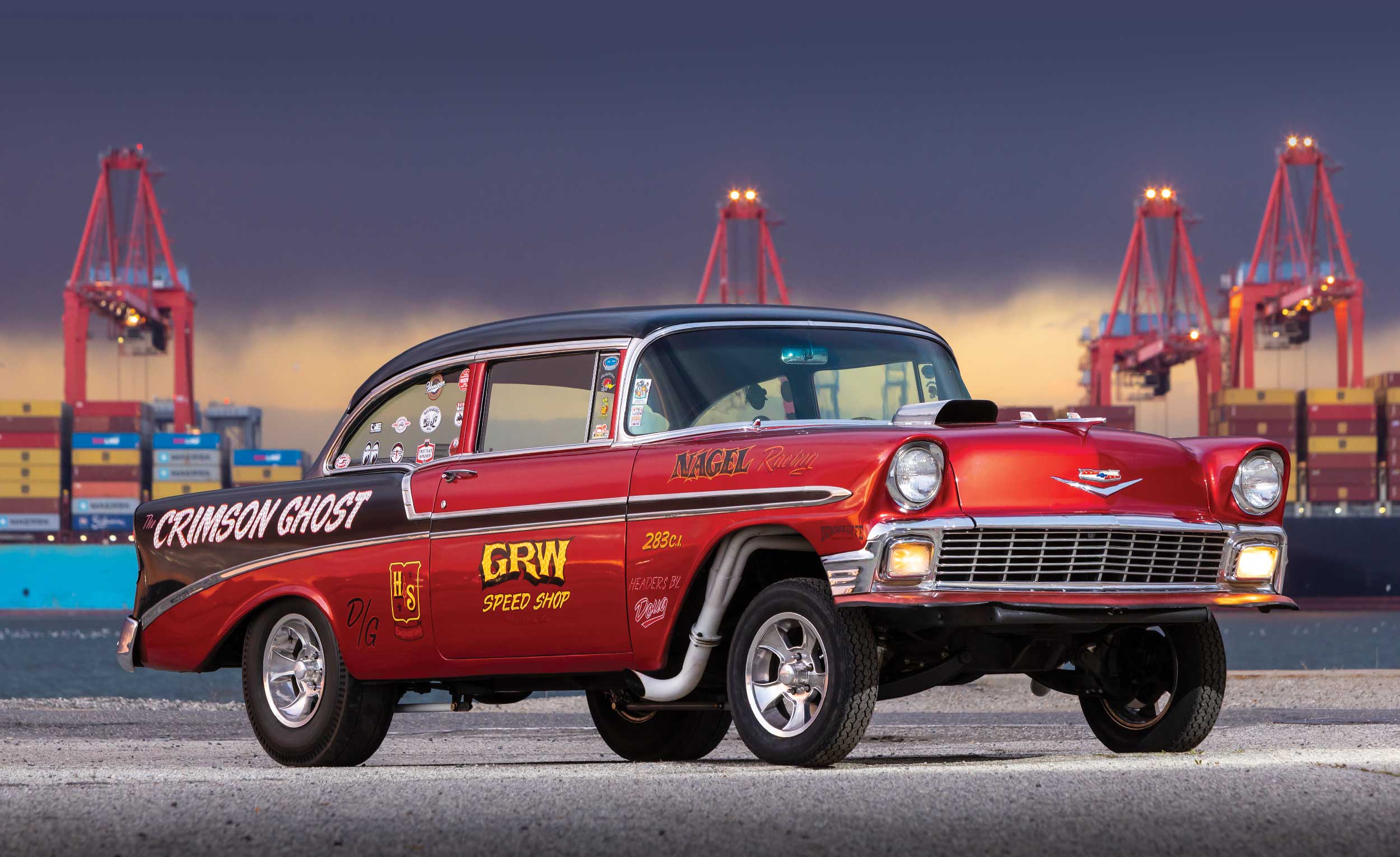
 TECH
TECH
 BY All Chevy Performance Staff
BY All Chevy Performance Staffe are back for our final installment with Craig Hopkins and Wesley Kennedy of The Installation Center and this Auto Metal Direct (AMD) second-gen Camaro conversion. In the September issue we covered converting the front end of this ’78 Camaro into the ’71-73 steel bumper version.
We removed the entire front end and everything bolted right up without any heavy modifications. From the hood and fenders to the grille and bumper, we showed you just how easy this is.
Our go-to restoration parts supplier, AMD, has everything you need to do this conversion. With top-quality parts, this project can easily be done in your home garage.
In the final segment, we’ll get the bumper and a few other final pieces installed to top off our second-gen sheetmetal conversion. If you missed anything along the way, you can always purchase back issues or find the articles online at allchevyperformance.com.
 FEATURE
FEATURE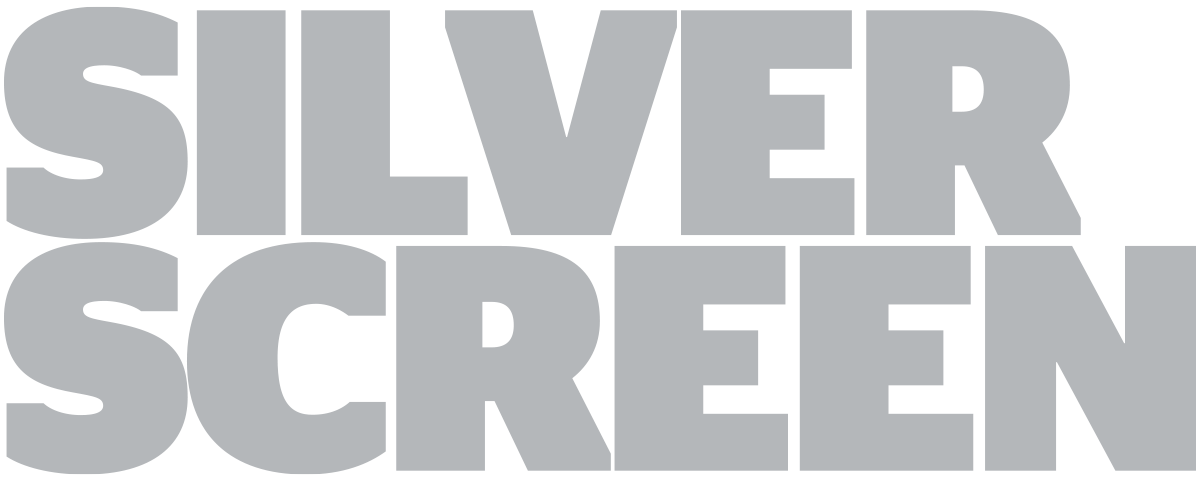
 Photography by Jason Matthew
Photography by Jason Matthewor Pete Jacob, the car bug bit him at a young age. Starting at about 11, building model cars took up a good chunk of his time. That little hobby led to working on cars with his older brother who at one time had a ’71 Plymouth Cricket–not a particularly popular car to get the fire started, but the flame was lit. Pete’s contribution to the unlikely project included “upgrading” the tires. “I looked at the car and thought it needed something to make it cool.” Pete recalls, “So I painted the tire letters white to give the car some performance style.”
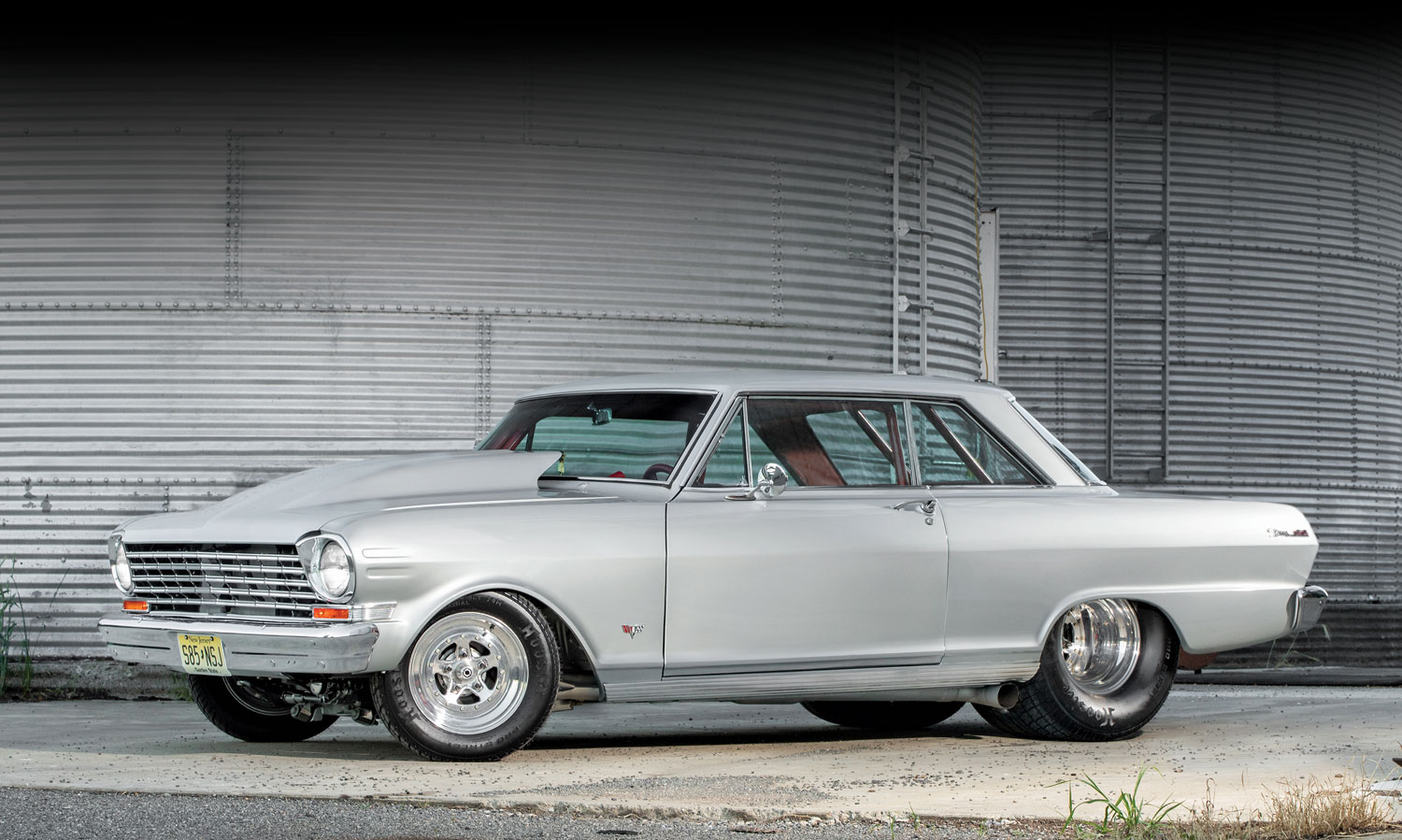
 TECH
TECH Photography by The Author
Photography by The Author
 Photography by The Author
Photography by The Author
ngine swaps have been happening long before the first 265ci V-8 rolled off GM’s production line. It would be hard to argue that an engine has been swapped into more cars than the venerable small-block Chevy, but its baby brother, the LS-series engine, has got to be pulling a healthy spot in Second Place. Poke your head under the hood of any Tri-Five, Camaro, Chevelle, or other classic Chevy at the local cruise-in and you’re likely to be face to face with the same engine that powers your neighbor’s contemporary Silverado. The LS swap has become commonplace, and for good reason.
For starters, the LS-series engine is similar in size, with the old small-block being slightly longer due to the extended snout of the water pump to facilitate a mechanical cooling fan. The LS, in comparison, is a few inches wider due to its cylinder head design. Its shorter length, in addition to the lack of a distributor to foul the firewall, makes placing an LS engine a more variable affair. Additional clearance at the radiator side for accessory or electric fan clearance can easily be accomplished since the bellhousing area of the block can be slid further rearward into the firewall thanks to the additional clearance provided by the aforementioned lack of distributor.
Another physical benefit provided by the LS-series engines are weight. While materials varied throughout the years, a fully dressed LS engine with an aluminum block, cylinder heads, and composite intake manifold could yield a weight that is tens if not hundreds of pounds less than a first-gen iron small-block. A modest weight reduction over the front axle centerline can result in a more balanced distribution of weight and an overall better-handling car. That’s a huge step in the right direction when accompanied by similar improvements in the brakes and suspension department to turn that heavy Chevy into a canyon-carving cruiser.
 FEATURE
FEATURE

 Photography by The Author
Photography by The Authornce upon a time, when teenagers didn’t hide in their parents’ basements with their heads buried in video games, one of the things they looked forward to was getting their first set of wheels and going out and meeting other teens. For many, that was an attainable goal before they finished high school. While that mind-set doesn’t seem as prevalent today, there are still some out there who keep the torch alive. Mike Berchick falls into that torch-carrying demographic.
During his last year of high school in 2015, he set out to score a reasonably priced daily driver. The ’84 Monte Carlo SS you see is his low-buck Craigslist find. “The reason I bought this car was because that was all I could afford at the time,” he explains. “I wanted a car that I could work on, drive every day during my senior year in high school, and have fun with.” With only a shade over 52,000 miles on the odometer, it didn’t reflect that low mileage because it had a number of issues. Mike points out, “It was on the rough side. There was rust on the roof, fenders, quarters, and the trunk was shot. It was a mess and it barely ran, but everything was still pretty much stock.” The 305 underhood had a number of issues, so his solution to try and remedy its ailments came in the form of an Edelbrock 600-cfm carburetor and an Edelbrock aluminum intake.
 TECH
TECH Photography by The Author
Photography by The Author



 Photography by The Author
Photography by The Authorelaying information about the engine to the driver was never really of huge importance to Chevrolet or the other OEMs. They figured a temp gauge was worthy of being in most instrument clusters and maybe a couple warning lights, just in case.
Why is “Guardrail” Willie Martin smiling? Well, it likely has a lot to do with his high school ride’s suspension upgrade. Martin has owned this same ’55 Chevy 150 pretty much straight-through since 1970. In fact, in slightly earlier years it served as the loaner car for Martin’s family business: the original Ed Martin Garage.
As a third-generation auto mechanic, Martin has enjoyed a long, successful run in the trade. That was back in Riverside, California. But back to his flammable ’55—following a crash, and an off-frame rebuild, it’s been together, on the road in its current configuration now for 22 years. During that time, it’s also been driven—a lot.
Just recently Martin took notice that the ol’ Chevy’s OEM stock-type control arm bushings were exhibiting signs of wear. Back when the car was last built, we didn’t have the options that we have today. Tubular control arms, for example, weren’t considered. Neither were coilover shock absorbers.
Advertiser
- American Autowire57
- Art Morrison Enterprises55
- Auto Metal Direct43
- Automotive Racing Products11
- Borgeson Universal Co.41
- Bowler Performance Transmissions89
- Classic Industries39
- Classic Performance Products4-5, 89, 92
- Dakota Digital91
- FiTech EFI61
- Golden Star Classic Auto Parts7
- Heidts Suspension Systems61
- Holley Performance Products85
- Lokar2
- National Street Rod Association73
- Original Parts Group29
- Powermaster Performance75
- Rod Shows45
- Schwartz Performance85
- Scott’s Hotrods75
- Specialty Equipment Market Association59
- Speedway Motors13
- Steele Rubber Products9
- Thermo-Tec Automotive85
- Vintage Air6
- Wilwood Engineering27
- Year One89









